Living Legacy
-
Amann, Eric W.
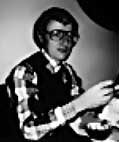 Eric W. Amann
Eric W. Amann(16 January 1934 – July 2016)
One of the most influential figures in the formative years of the haiku movement in Canada was Toronto medical doctor and poet Eric Amann. He was born in Munich in 1934. In 1952 Eric and his family emigrated to Chester, Pennsylvania. In 1953, Eric was drafted for the Korean War and escaped to Winnipeg where he stayed with family friends from Munich. He earned his medical degree in 1961.
As many other poets in the 1960s Amann's interest in haiku was sparked by the six volumes written by R.H. Blyth. After reading and writing haiku for several years, Eric Amann edited and published the first Canadian haiku magazine Haiku from 1967-1970. Under Amann’s editorship Haiku rapidly became one of the most influential North American periodicals, publishing experimental as well as classical work. After a hiatus of seven years, during which he engaged in other kinds of writing, in 1977 Amann returned to haiku with a new magazine Cicada (from 1977-1982) which immediately achieved a similar status. The same year Eric Amann, Betty Drevniok and George Swede founded the Haiku Society of Canada, which later in 1985 was renamed to Haiku Canada. Eric served as its first president during 1977-79. In 1979 Eric Amann also published one issue of konkret [a journey into the concrete and visual].
In the preface to the 1986 edition of The Haiku Anthology, Cor van den Heuvel wrote that “Haiku and Cicada [were] perhaps English language haiku's most influential magazines [and that they] are still unsurpassed for excellence in both content and design, though both have ceased publication.”
Eric W. Amann sadly passed away in July 2016 and left a huge void in the international haiku community.
While writing about the significant achievement of one of the pioneers of English-language haiku, Richard Stevenson states: “For Eric Amann, the ideal is to capture the ‘ah experience’ or ‘a mood of serene calm and beauty.’ The form may vary from the traditional three-line, 5-7-5 syllable count to the one-line portrait; it may even be stretched to include the "mutational possibilities" of senryu, vertical, visual, and sound haiku.” – (Richard Stevenson in Canadian Literature, Spring 1985)
Publications:
- Plastic Flowers [a collection of poems] (1964);
- The Wordless Poem , Toronto: Haiku Society of Canada, 1969;
- No More Questions, No More Answers, [a collection of one-liners], 1980;
- Cicada Voices: Selected Haiku of Eric Amann, 1966-1979. George Swede, Editor. High/Coo Press, 1983;
- The Space Between, George Swede, with Eric Amann, LeRoy Gorman, (Glen Burnie, MD, USA: Wind Chimes, 1986);
- Eric Amann’s work appears in all three editions (1974, 1986, and 1999) of Cor van den Heuvel's The Haiku Anthology.
Selected haiku:
Winter burial:
a stone angel points his hand
at the empty sky(1978 Eminent Mention Award, Modern Haiku)
Withered winter tree;
its barren boughs reflected
in the sick man’s eye(1979 Eminent Mention Award, Modern Haiku)
*
Anaesthesia:
the last deep breath
takes the whole world away!(Cicada Voices: Selected Haiku of Eric Amann 1966-1979, (High Coo Press, 1979)
*
A morning of snow:
listening to the muffled sound
of the blind man’s cane(Modern Haiku 10:1, 59)
last day of autumn:
and still the sunset lingers
in a one-way street.(Modern Haiku 1:1, 6)
New Year’s morning:
a sober newsman
repeats the casualties.(Modern Haiku 2:1, 18)
Softly falling
on the names of the dead:
spring rain …(Modern Haiku 1:2, 5)
The long walk back:
— A tiger lily
Points the way …(Modern Haiku 6:3, 9 (a)
The old Ford truck —
still clinging to it:
last summer’s leaves …(Modern Haiku 1:2, 17)
*
deep inside your mouth no more questions no more answers
(Cicada Voices: Selected Haiku of Eric Amann, 1966-1979; High/Coo Pr (Jun. 1983); p.50)
deep penetration the bedside candle quivers lightly in the moonlit room
(Ibidem, p.51)
wild raspberry taste on the tip of your tongue
(Ibidem, p. 52)
*
Billboards
wet
in spring
rain…Snow falling
on the empty parking-lot:
Christmas Eve…A night train passes:
pictures of the dead are trembling
on the mantelpiece(The Haiku Anthology, editor Cor van den Heuvel, 3rd edition, Norton, 1999; pp.2-4)
*
The starlit sea
* * * * * * * * * * * * * * * *
* * * * * * * * * * * * * * * *
* * * * * * * * * * * * * * * *
* * * * * * * * * * * * * * * *
~ ~ ~ ~ ~ ~ ~ ~ ~ ~ ~ ~ ~ ~ ~ ~
~ ~ ~ ~ ~ ~ ~ ~ ~ ~ ~ ~ ~ ~ ~ ~
~ ~ ~ ~ ~ ~ ~ ~ ~ ~ ~ ~ ~ ~ ~ ~(Cicada Voices: Selected Haiku of Eric Amann, 1966-1979; High/Coo Pr, 1983; p. 37)
More haiku at:
http://terebess.hu/english/haiku/amann.html
Sources:
- http://performance.millikin.edu/haiku/writerprofiles/EricAmann.html
- http://www.haikucanada.org/home/about.php?style=1&page=1001
- http://www.brickbooks.ca/a-history-of-haiku-in-canada-in-two-parts-by-terry-ann-carter/
- http://www.thehaikufoundation.org/poet-details/?IDclient=1804
- http://www.litkicks.com/OnWesternHaiku
- http://www.modernhaiku.org/MH-Archive/authorsA-D.html#a
Essays and articles on the works of Eric Amann:
- http://www.simplyhaiku.com/SHv5n2/tracks/tracks.html
- http://performance.millikin.edu/haiku/writerprofiles/WalschOnAmann.html
-
Anderson, Hortensia
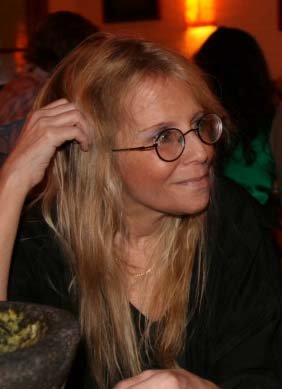 Hortensia Anderson
Hortensia Anderson
June 24, 19?? - May 21, 2012Hortensia Anderson is the author of numerous chapbooks as well as a volume of poetry, Trust (fly-by night press, 1995). She maintained an interest in renga and other forms of collaborative poetry with other poets around the world and explored paintings by Frido Kahlo and Georgia O'Keeffe via ekphrastic poems.
In her words:
"My creative interest lies in the opportunities for collaborative poetry projects on the internet. I have been able to work with poets from Europe, Australia, Asia, and from coast to coast in the US. I currently reside in nyc and on the world wide web."
and
"[Frida Kahlo's] art speaks to me both as a poet and as one living with the most faithful of companions - Pain. As Kahlo demonstrates so vividly, Pain keeps us on the razor's edge between desperation and inspiration."Some of her writings may be read on her following blogs:-
http://hortensiaanderson.blogspot.com
http://hortensiaanderson-ekphrasis-1.blogspot.com
http://hortensiaanderson-ekphrasis-2.blogspot.comHer work has been published in Frogpond, The Heron's Nest, Ribbons, Simply Haiku, The Mainichi Daily News, Asahi Haikuist Network, tinywords, Lynx, Haijinx, Hermitage, Woodnotes, South by Southeast, Modern English Tanka Quarterly, Contemporary Haibun, Haibun Today,Prune Juice, Ambrosia, Concise Delight, Modern Tanka and Haibun Prose, and moonset.
Awards and Other Honors:Include Best of 2002: Haiku in English, The Mainichi Daily News; 5th Annual Suruga Baika Winner; Honorable Mention, Mainichi Contest (2003); Tanka Splendor Awards (2003, 2004); and Third Prize, Kusamakura (2004). Her work has been selected to appear in various anthologies, including edge of light: The Red Moon Anthology of English-Language Haiku 2003 (Red Moon Press, 2004), dust of summers: The Red Moon Anthology of English-Language Haiku 2007 (Red Moon Press, 2008); Rose Haiku for Flower Lovers and Gardeners (Price-Patterson, Ltd., 2005); The Five-Hole Flute (MET Press, 2006); The Tanka Prose Anthology (MET Press, 2008); Ash Moon Anthology: Poems on Aging (Lulu Press, 2008); and Take Five: Best Contemporary Tanka (MET Press, 2009).
Books Published:Trust ( fly-by-night press, 1994) [ISBN 0-9639585-1-8]; Georgia on My Mind (Imp Press, 1992); Awareness of Rose (Imp Press, 1993); Beg, Borrow or Steal (Betty Elyse Press, 1994); Living in Frida's Body (Imp Press, 1995); The Plenitude of Emptiness: Collected Haibun (Darlington Richards, 2010).
Read a selection of her haiku.
-
Anderson, Hortensia
Hortensia Anderson
-
Bikov, Todor
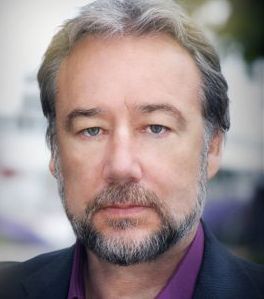 Todor Bikov
Todor Bikov(12 December 1956 – 24 May 2016)
Todor Bikov was born on 12 December 1956 in Pazardzhik, Bulgaria. He graduated the Theological Seminary“St John of Rila” andholds a Master of Diplomacy and International relations. Resided and worked in Plovdiv since 1983. Bikov was a widely published poet, publicist, political scientist, and art critic. He was a lecturer at Plovdiv University “Paisii Hilendarski”. He worked in the 42nd National Assembly of the Republic of Bulgaria (2013-2014) as a senior expert in the Committee on Religions and Parliamentary Ethics; also worked as a freelance journalist and associate in the "Literature, Art, Culture" section of Radio Plovdiv, head of the "Society" and "Culture" department in the Plovdiv News (Пловдивски новини) newspaper and editor of the Glas(Глас) regional newspaper.
Bikov was founder and editor-in-chief of the Art Club (Арт клуб) newspaper (1994-2004). In 2003 along with Ivanka Yankova he co-founded the Haiku Club-Plovdiv (HCP) and later in 2005 he compiled and edited the bilingual anthology Прагове/Thresholds published by HCP and the Club of Cultural Figures in Plovdiv. In 2005 he participated in the 3rd World Haiku Association (WHA) Conference in Bulgaria and organised the delegates’ visit to Plovdiv and meetings with the HCP members. He was also an active member of the Union of Bulgarian Writers and five terms chairman of the Club of Cultural Figures in Plovdiv.
Bikov’s poems, articles, reviews, studies, etc. have been published in national anthologies (the most significant being his inclusion with five poems in the Anthology "Bulgarian Poetry of the XXI Century", published in 2015), in the Bulgarian and international press, in scientific collections and publications, broadcasted on Bulgarian National Television, Bulgarian National Radio, Radio Plovdiv and many other electronic media. He has published six collections of poems (1990-2016) incl. Стихосложения: цикъл хайку (Stihoslozheniya: Haiku Cycle, Sofia, 2012). His last poetry book was published shortly after his untimely death on 24 May 2016.
Selected haiku:
a storm is raving, then subsiding –
a shadow
cast by yet another shadowa high and slender poplar –
a heron standing tall
is building a nestcheerful warbling fills
the lover’s nests
it’s springtime(Прагове/Thresholds, bilingual anthology, Plovdiv, 2005)
*
tidal wave
the land recedes
in front of the fishthunder in broad daylight
ball lightning
chokes the throatin the winter I read
and wrote a lot –asnowman...
no, a bookmandragonfly over the river -
a sunny walk
on the ridge of the day(Стихосложения: цикъл хайку(Stihoslozheniya: Haiku Cycle), Sofia, 2012)
*
a shadow hides
under the bird’s wing
July daya floppy wheat ear
the smell of bread
floats aroundfrozen sunset
over the river
at home – embers(Отвъд думите/Beyond Words, haiku anthology, Farago, Sofia, 2018)
Sources:
-
Childs, Cyril
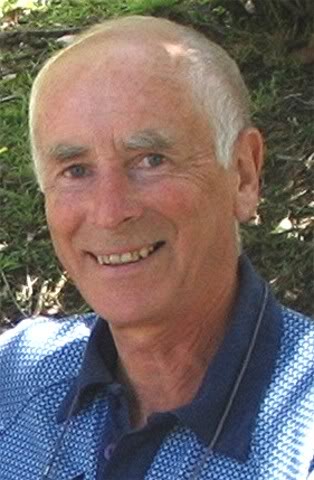 Cyril Childs
Cyril Childs(1941 – 2012)
“I venture to claim that haiku is currently alive and thriving in the Shaky Isles[New Zealand]. To my eyes the future looks rosy - and I’m confident it will be rosy - just as long as the passion for the form and the voluntary efforts evident today are maintained or surpassed in the future.”
(“Haiku 45 South” by Cyril Childs, delivered at the fourth Haiku Pacific Rim Conference (Terrigal, Australia) in September 2009 and published in Wind over Water, the Conference Proceedings)
Cyril Childs was a cricketer, scientist, leading haiku poet and editor of national haiku anthologies in New Zealand. He was born in Invercargill in 1941. He became intrigued with haiku while living in Matsuyama, Japan for several months during 1989-90. He was a past-president of the NZ Poetry Society, edited both of the NZ Haiku Anthologies published by the NZPS (1993,1998) and co-edited Listening to the Rain (Small White Teapot Group, Christchurch, 2002) – an anthology of haiku and haibun by Christchurch writers.
His own book, Beyond the Paper Lanterns: A Journey with Cancer, dedicated to his first wife, was published in 2000. That same year a copy was carried to the summit of Mt Fuji in Japan by American haiku poet Jerry Kilbride in a climb organised by the US Breast Cancer Fund. In a piece published in 2006 Cyril wrote: "Jerry read from the book to the climbers the night before their ascent and he carried it to the summit. After the climb Jerry had everyone write a message in the book and returned it to me. It will remain a precious thing to me and my family."
Cyril judged three NZPS haiku competitions and was co-judge, with Jerry Kilbride, of the HSA's Henderson Award in 2000. Cyril also wrote in other poetic forms like free verse. His poetry appeared widely in international magazines and anthologies such as contemporary haibun online, Modern Haiku, Frogpond and Wind over Water: an anthology of haiku and tanka and in New Zealand journals, including Poetry NZ, JAAM, Kokako, CommonTatta and Bravado. His book reviews appeared in JAAM, New Zealand Books and on the NZ Poetry Society website. Childs also had a keen interest in sports such as rugby and cricket and in 2010 appeared in the cricket poetry anthology A Tingling Catch: A Century of New Zealand Cricket Poems 1864-2009.
After a career as a scientist, Cyril retired to Port Chalmers in a home overlooking Otago Harbour and also enjoyed spending time at his beloved bach (crib) in Riverton. A biography of his uncle's wartime exploits absorbed most of his writing energy in later years. The book was under contract for publication at the time of his death. Childs died on 27 January 2012, only a few months after himself being diagnosed with cancer. He is survived by his son Norris, his daughter Lia and his second wife Christine.
Some publications:
- New Zealand Haiku Anthology, edited by Cyril Childs (New Zealand Poetry Society, Wellington, 1993);
- The Second New Zealand Haiku Anthology, edited by Cyril Childs (New Zealand Poetry Society, Wellington, 1998);
- Beyond the Paper Lanterns: A Journey with Cancer, by Cyril Childs (Paper Lantern Press, Lower Hutt), 2000 - prose, free verse and haiku;
- Listening to the Rain, edited by Cyril Childs and Joanna Preston (Small White Teapot Group, Christchurch, 2002). Highly Commended by the Haiku Society of America Merit Book Awards, 2003;
- A Tingling Catch: A Century of New Zealand Cricket Poems 1864-2009, edited by Mark Pirie (HeadworX Publishers, Wellington, 2010) included haiku by Cyril Childs, Andre Surridge and Tony Beyer;
- Wind Over Water: an anthology of haiku and tanka by delegates of the Fourth Haiku Pacific Rim Conference, edited by Dawn Bruce and Greg Piko, 2009.
Selected haiku:
no name
for its colour
tea-table rose(Modern Haiku XXV: 1)
full white moon
touching . . . not touching
the top of the hill(Frogpond XVI: 2, 1993)
daylight saving ends —
an early recall
to the cancer clinic(Beyond the Paper Lanterns, (Paper Lantern Press) 2000)
amidst mountains
she pauses to admire
violets(Frogpond XXIII: 1)
tea break
a sparrow at point fossicks
among the seed-heads(Poetry NZ 25, 2002; A Tingling Catch, 2010)
me
pulling
the weed
pulling
me(Kokako 2, 2005)
better than ever
in my neighbour's garden
my old roses(Kokako 3 (modified) 2005)
winter morning
the lame goose lagging a little
behind its gaggle(Presence 27, 2005)
wind over water
so easily the cormorant
one to the other(Kokako 10, 2009)
for tonight enough
the stars...
the black sky(Kokako 13, 2010)
backyard cricket
Dad and I pick up
the kitchen window(Kokako 14, 2011; A Tingling Catch (Mark Pirie ed.) 2010)
bouncing ball
beating the giggling boy
down the zig-zag(Kokako 14 (modified)
Cricket song III:
out-swinger
nicks a thigh-pad –
the umpire’s fingerwobbles
french cut for 4 –
the new batsman hastens
to adjust his padsclose of play –
shadows of trees
seep over the pitch(From A Tingling Catch: A Century of New Zealand Cricket Poems 1864-2009, edited by Mark Pirie [Wellington: HeadworX, 2010])
Sources:
- http://www.poetrysociety.org.nz/haikushowcase/cyrilchilds
- http://www.thehaikufoundation.org/omeka/items/show/1486 - Simpson, Sandra et al., “A Brief History of Haiku in New Zealand,” The Haiku Foundation Digital Library
- http://www.thehaikufoundation.org/omeka/files/original/56065b84268499d1fda1fcede4c04c17.pdf
- http://www.thehaikufoundation.org/omeka/files/original/8223a29c63ffd8971b4b4ffce1208c46.pdf
- http://tinglingcatch.blogspot.co.uk/2012/03/tingling-catch-contributor-cyril-childs.html
- http://www.haikuoz.org/2012/01/cyril_childs_19412012.html
- https://poetryarchivenz.wordpress.com/2012/03/18/obituary-cyril-childs/
-
Creighton, Kat
Kat Creighton
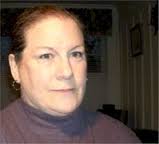 (1955 – 15 January 2014)
(1955 – 15 January 2014)In January 2014 the haiku community was shocked and saddened to hear that fellow writer Kat Creighton has passed away.
Kat Creighton was born into a large Irish Catholic family in 1955. Throughout high school she was writing for the school newspaper. Later she earned a BA in English from Kean University specializing in Creative Writing where she had her first poem published in their literary journal “Grubstreet Writer”.
Although she loved writing, nothing seemed quite right until in her adulthood she rediscovered haiku while reading a novel relating to Japanese culture. The has studied the short forms ever since. In the 1990s through the internet, she came along the World Haiku Club and authors like Basho, Issa, and Masajo Suzuki. She admired Masajo Suzuki's sensitive haiku and relied on them as sources of education and constant inspiration. To Kat the connection between nature and human nature was spiritual as well as physical. And being a photographer as well as a poet, Kat combined words and images to create the Japanese poetic form known as haiga. As her home was on the New Jersey coast, she often focused her work on the maritime landscape that she knew and loved. She featured it in online journals and in her blog called “My Ninth Life” during the past several years.
Kat Creighton’s haiku have been published in several electronic journals, including World Haiku Review, Short Stuff, Moments, Visual Haiku, Pegasus Dreaming and temps libres. Creighton’s haiku and haiga have appeared in A Hundred Gourds, Haiga Online, Sketchbook, and Simply Haiku.
Kat’s advice for haiku writers: “What speaks to you personally - that will make for your best writing.”
nearing sixty…
and still the desire
to fly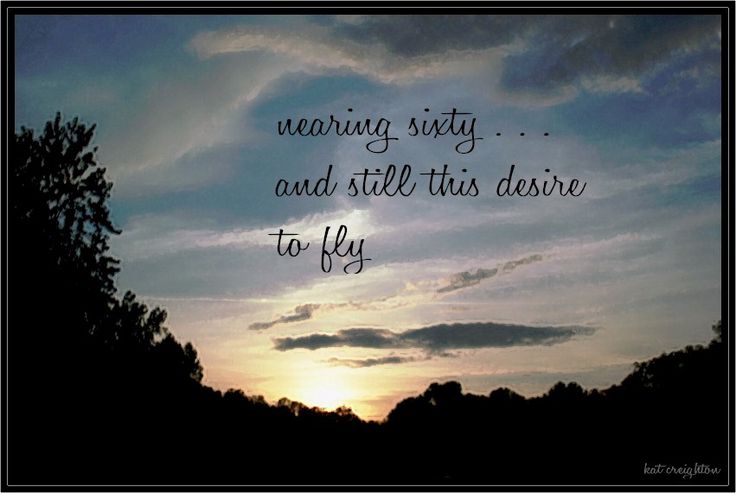
http://www.pinterest.com/umisprite/pins/
http://simplyhaikujournal.com/past-issues/summer-2012/simply-haiga/kat-creighton.html
http://ahundredgourds.com/ahg11/haiga20.html
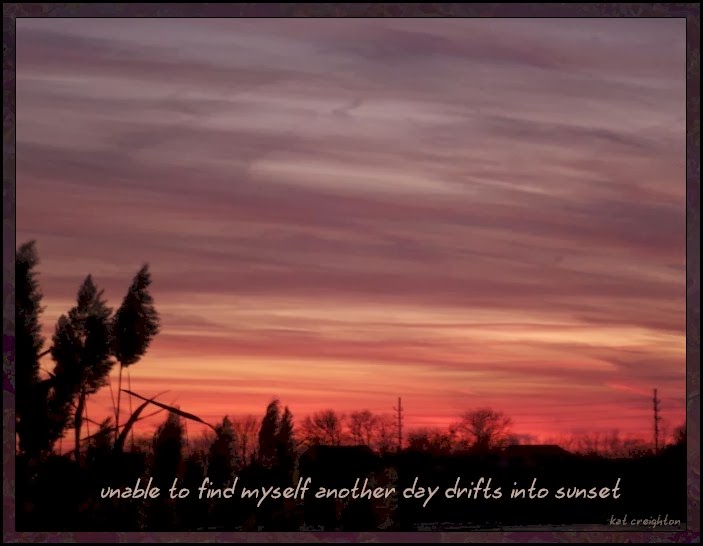
-
Creighton, Kat
Kat Creighton
-
Deodhar, Angelee
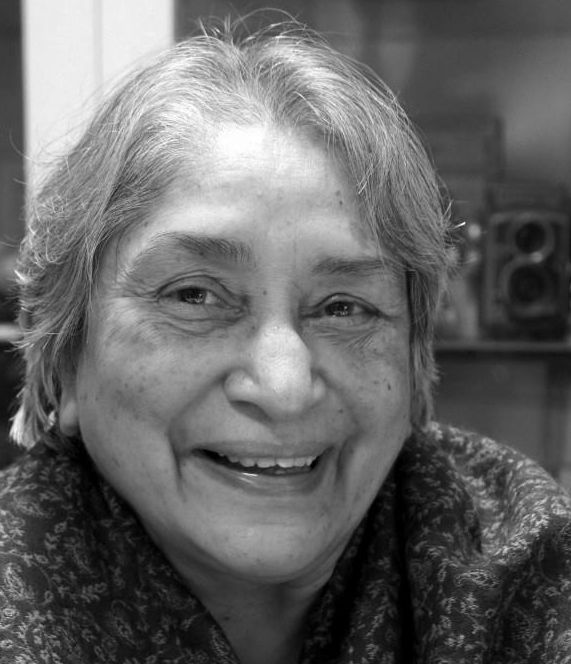 Angelee Deodhar
Angelee Deodhar(20 July 1947 – 28 June 2018)
“In two and a half decades of learning about haiku I have understood one thing,
that all writing is a lonely calling – to write a passable haiku one must be alone much – observe and respond from a felt depth.”
(from an interview with Angelee in the blogzine GLO-TALK, Monday, 30 June 2014)
A letter to Angelee
My dear friend,
When you departed from this world last summer it was felt all over the world. From our correspondence I knew the kind of person you were – warm, kind, intelligent, giving, however I had no idea what an enormous impact you have had on so many people, both seasoned writers and beginners on their haiku journeys.
Hippocrates wrote that ‘wherever the art of medicine is loved, there is also a love of humanity’. And you managed to take what’s sacred for your profession as a physician and transferred it into your life as a poet. You have always believed in the therapeutic effects of haikai poetry which you encountered through personal experience however the true therapy for anyone who was your friend or even just an acquaintance was simply in communicating with you – meeting you in person, sharing our common love of haiku, haiga or haibun, exchanging letters or e-mails. You had the rare talent to promote haiku and its related forms going beyond the boundaries we human beings tend to put around us. I remember vividly our conversation when I approached you to take part in a women’s anthology and when asked where you were born your answer was simple and yet so powerful – in undivided India. You wanted people to live and work together peacefully beyond the cultural differences and worked so hard to achieve that among the various haiku groups and societies. Your work as an editor and translator from Hindi has put India firmly on the haiku map and judging by the tributes online you have managed to influence the work of hundreds of poets from this amazing country.
You have accomplished so much and just a quick search online could reveal so many of your achievements done quietly just like a true angel. But then you do carry it in your name as well so no surprise there.
All of us, your friends and dare I say admirers, we do miss you. And yet we feel your presence around us as your legacy lives on.
With love and deep respect,
Iliyana
Photo by Tej Bans Singh Jauhar
Some publications:
- If Someone Asks…Masaoka Shiki’s Life and Haiku, 2005;
- Classic Haiku: A Master’s Selection, edited by Miura Yuzuru, 2006;
- Ogura Hyakunin Isshu: 100 Poems by 100 Poets, 2007;
- Children’s Haiku from around the world-A Haiku Primer 2007;
- Indian Haiku, 2008;
- The Distant Mountain:The Life and Haiku of Kobayashi Issa, a bilingual edition by by David G. Lanoue (English translations&comments) and Angelee Deodhar (Hindi translations) 2009;
- Journeys: An Anthology of International Haibun, by Angelee Deodhar (Editor), 2014
- Journeys 2015: An Anthology of International Haibun, Angelee Deodhar (Editor), 2015
- Journeys 2017: An Anthology of International Haibun, Angelee Deodhar (Editor), 2017
Selected work:
azure butterflies
flitting about
flakes of sky(New Hope International, 1997 (UK)
*
an I.V. line
anchors me to the monitor
thoughts still wander(Modern Haiku, XXIX:1, 1998 (USA)
*
in the silence
of the zendo
my stomach growls(Frogpond XXI:2, 1998 (USA)
*
between us
vapours from the teacups
autumn chill(Modern Haiku, Volume XXXI: Number 3, Fall 2000)
*
haiga workshop
in the downstroke of the brush
the sound of rain(Presence Award, Highly Commended, also published in Haiku Canada Newsletter, Vol XV, June 2002 Number 3)
*
midnight walk
the dog nudges me down
our moonlit path(The Asahi Shimbun, 25-26 Oct 2003)
*
rumors of war
up into a darkening sky
- a child's newsprint kite(Third Prize, The Robert Spiess Memorial Haiku Award for 2003; New Year's bells: Mainichi Daily News, Jan. 3, 2004 (No.655)
*
late afternoon
up to its belly in hyacinths
a pregnant buffalo(The Heron’s Nest, Volume VII, 2005)
*
after the rain
cherry blossom breath
from every puddle(Akita International Haiku Network, 2013)
*
out of the fog
a crow's cracked caw
drips into silencewinter bare tree
ice crystals sculpt
an abandoned nestTai Chi-
a blue heron takes up
the master's stance(Poetry Pacific, e.zine, 5 November 2015)
*
gibbous moon
my ear on the curve
of her belly(The Heron’s Nest, Volume XVII, Number 2: June 2015)
*
last night’s rain
the bird bath full
of sparrows(Africa Haiku Network Rainfall Haiku Series, Haiga/Photoku No. #28, 28/06/18)
*
windswept -
into an upside down umbrella
frangipani blossomsветровито
в преобърнатия чадър
цветчета от плумерия(the bilingual anthology Peonies/Божури, ed. by Iliyana Stoyanova, Sofia 2019)
*
‘Haiku Silence’ - essay by Angelee Deodhar
Sources:
- http://www.worldhaiku.net/poetry/eng/india/a.deodhar/a.deodhar.htm
- https://simplyhaiku.com/SHv4n4/features/Deodhar.html
- http://www.theheronsnest.com/archives.html
- http://poetrypacific.blogspot.com/2015/11/5-haiku-by-angelee-deodhar.html
- http://www.sumauma.net/haijins/haiku-angelee.html
- https://akitahaiku.com/2013/04/27/haiku-by-angelee-deodhar-in-india/
- http://contemporaryhaibunonline.com/pages_all/archives.html
- https://cafehaiku.wordpress.com/2016/08/16/angelee-deodhar-a-life-in-haiku/
- http://www.haibuntoday.com/ht123/Articles_Memoriam.html
-
Facey, Erica
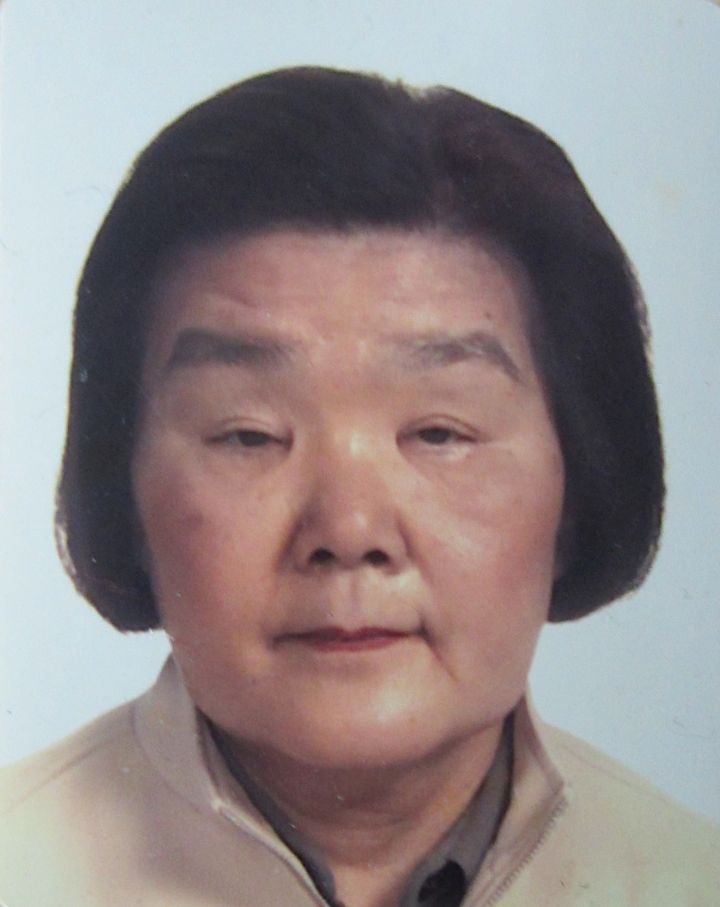 Erica Facey
Erica Facey(6 Novenber 1945 – 21 July 2022)
Erica Facey was born on 6 November 1945 in Nishinomiya, a district in the city of Osaka, Japan. Her maiden name was Kitagawa Kikuko [Japanese: 北川喜久子]. She went to school in Osaka and proved to be a very able pupil. She wanted to go to university but at that time it was difficult for women to do so. She eventually went to the woman's University of the Sacred Heart, Tokyo, which had been set up in 1948. She graduated from there with a BA in English. She was unable to find a suitable position in Japan and decided to come to Britain and study Linguistics at the School of Oriental and African Studies (SOAS), London University, registering first for an MA then continuing to a PhD. She completed a dissertation titled “Structural Analysis of the Japanese Language Using Montague Grammar” and was awarded her PhD in 1981. Facey presented a number of papers at conferences on linguistics and had a teaching post at SOAS. However, she found academic life difficult, especially the need to search for funding and decided to take another path.
By this time she was married and had a young daughter, which took up a lot of her time. Erica Facey had always been interested in haiku, which she had studied in Japan. She decided to become active in the haiku world and promoting haiku in Britain as this could be easily fitted in with her other activities. She always wrote her haiku in Japanese only later translating them into English. The Japanese versions were published in the Japanese haiku magazine ‘Hototogisu’ (ホトトギス) and in various saijiki (haiku almanacs). Facey was sufficiently involved in the British haiku world to be an original member of The British Haiku Society in 1990. However, at that time, she found it very inward looking and not matching her aspirations.
Her feelings were that there was a real need to attract beginners, especially schoolchildren, and provide a platform for work related to haiku, even if not specifically haiku. Haiku should not just be for the specialist. To this end she set up the organisation ‘Time Haiku’ and while a number of people were involved the poet Gavin Ewart gave the necessary encouragement and the Waltham Forest Arts Council provided financial support. In 1997 through the Time Haiku Group she published a collection of her haiku in Japanese and English titled Flying.
Time Haiku magazine was then founded and the first edition published in 1995 with Erica Facey as the Editor. Although Doreen King and later Diana Webb took over the duties of editing Time Haiku, Facey remained involved in an administrative capacity until 2021, as newsletter editor and as author of short articles about Japanese kigo (season words) and poetic techniques. In 2004 she edited a selection of poems, Time Haiku Anthology. Erica Facey also published three books of haiku, which were composed in Japanese with English translations: Gliding (2001), Diving Grebe (2005), and Images (2015).
Erica Facey died in London on 21 July 2022.
We are very grateful to Erica’s husband Owen Facey for contributing to the Living Legacies feature with her biography.
Publications:
- Flying (Time Haiku Group, 1997)
- 滑翔 / Gliding (France-Do, Co., Ltd, Tokyo, 2001)
- 潜鳰 / Diving Grebe (France-Do, Co., Ltd, Tokyo, 2005)
- 心象 / Images (France-Do, Co., Ltd, Tokyo, 2015)
Selected works:
from Gliding (2001)The broken columns
holding the space between them:
the summer seaAt the waterside
reed shoots burst forth,
all else is withered.Striking stripes
half hidden in the stones:
a frozen butterflyThe robin came,
selected a withered leaf
and left the garden.from Diving Grebe (2005)
Her dress flowing
in the spring sunshine;
the headless statue.Seeing nothing
hearing the sound of flying away:
withered reed bed.Directly under
the swirling flock of seagulls
endless withered fields.At the spring market
asking a reduction on the
God of wealth and longevity.from Images (2015)
By every rain
the Autumn is deepened;
my life too.Showy daffodils
by the side of the road:
a traffic accident.Visible experience
yes but the hidden too,
winter cherriesWinter camellia:
it is simply
What it is.Sources:
- https://haikupedia.org/article-haikupedia/haiku-in-the-united-kingdom-england/
- https://haikupedia.org/article-haikupedia/erica-facey/
- https://thehaikufoundation.org/omeka/items/show/4124
- https://www.geraldengland.co.uk/revs/bs177.htm
- https://www.japansociety.org.uk/review?review=495
- https://www.japansociety.org.uk/review?review=704
- https://www.hsa-haiku.org/frogpond/FrogpondIndex.pdf
- Time Haiku, ed. Diana Webb, issue #57, 2023
-
Filipova, Sofia
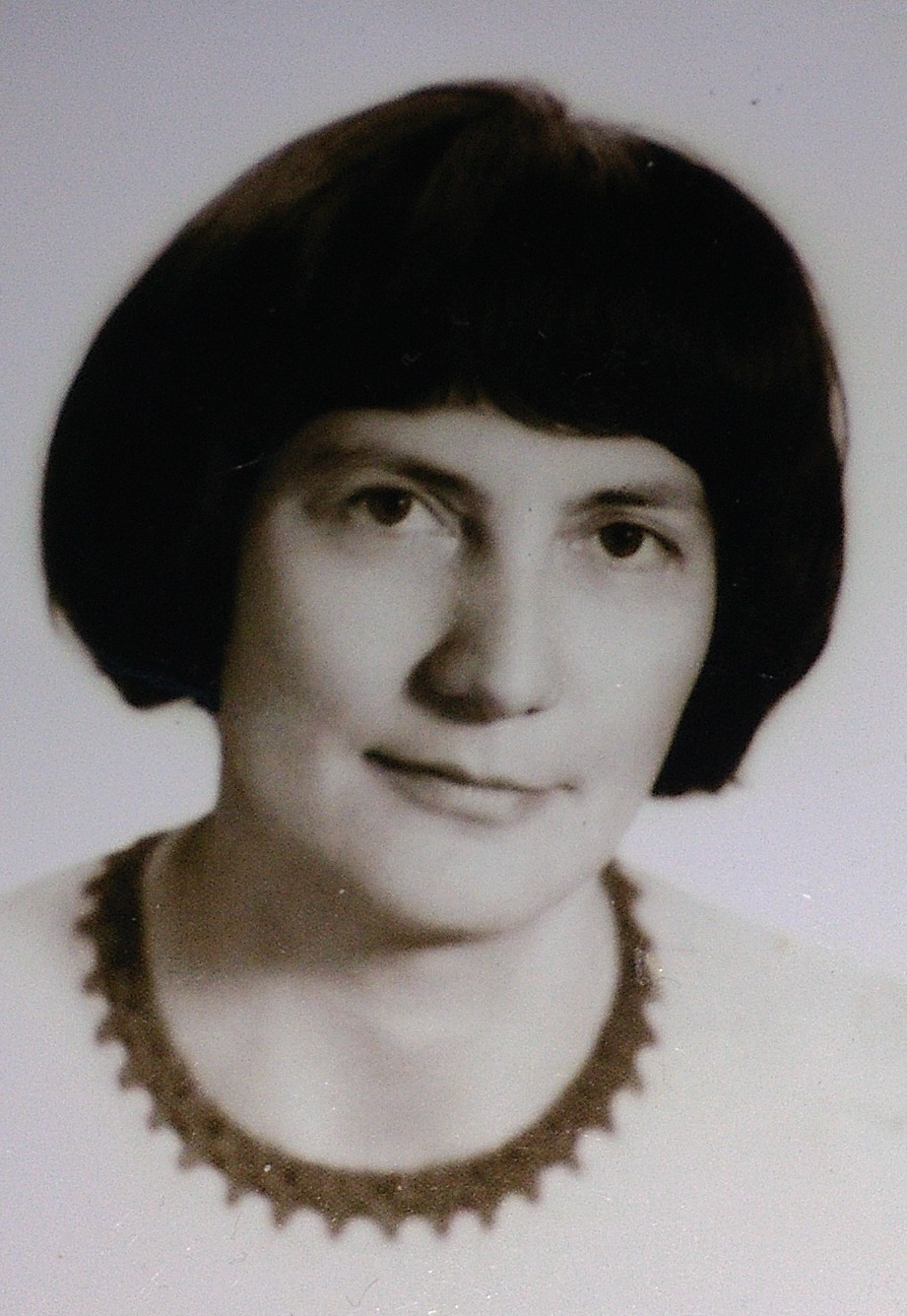 Sofia Filipova
Sofia Filipova(24 December 1930 – 17 January 2022)
Sofia Filipova was born in Asenovgrad, Bulgaria on 24 December 1930. She held a degree in Bulgarian philology from Sofia University ‘St. Kliment Ohridski’ and a PhD from the Research Institute of Education. She has further specialised in Moscow and Saint Petersburg. Filipova has worked for many years as a teacher in Bulgarian language and literature in the National School for Ancient Languages and Cultures ‘St Constantine-Cyril the Philosopher’ in Sofia, and was Research Associate in the Department for Methodology of Literary Education at Sofia University.
Sofia Filipova was a Bulgarian poet, editor, and literary critic; retired professional educator. In 1993 she wrote and introduced the first collection of tests in Literature for the 7th grade in the Bulgarian educational system, which marked the beginning of the new system for checking and evaluating knowledge. In addition as a study aid, she authored educational film scripts for Bulgarian classics like Geo Milev, Yavorov, and Hristo Smirnensky, which were screened at schools, and her monograph "Formation of an aesthetic attitude to a literary work" (1975; 1986) became a kind of textbook for teachers of literature, directing the construction of a broad view of literary phenomena, combining literary studies with aesthetics. Since 2014, she has been a permanent member of the jury at the "St. St. Cyril and Methodius" International Foundation for selecting the most prominent teacher of Bulgarian language and literature for the year. For her long-established service in the field of education and culture, Filipova has received a number of certificates "Merit for Bulgarian Education" (from the Union of Bulgarian Teachers, the Union of Bulgarian Writers, etc.), medals and honours, incl. the Order of Cyril and Methodius - 2nd degree from the State Council of the Republic of Bulgaria.
She was the author of a ground-breaking Речник по стихознание (Dictionary of Verse Studies, 2004; reprinted in 2010), and has written numerous articles, and essays on haikai poetry, reviews, monographs, textbooks, and poetry collections. In 2008 Filipova co-founded, together with Angelina Vasileva, the Sofia Autumn Salon of Poetry and was co-editor of its electronic magazine Поетични страници (Poetic Pages). She was co-author together with Alexandra Ivoilova of the poetry collection Отгласи (Resonance, 2009) – a renga-like questions and answers. In 2019 Filipova published her solo poetry collection Жажди (Thursts, Sofia).
Sofia Filipova was a long-standing and very energetic member of the Bulgarian Haiku Union and served as its chairwoman (2014-2020). In 2013 she initiated the BHU journal Хайку свят(Haiku World) and was its editor-in-chief (2013-2022). In addition to haiku and related forms, the journal publishes theoretical articles on the aesthetics of haiku, announcements about new haikai books, events and various contests. In 2016 Petar Plamenov and Sofia Filipova held a conference on the theme “Wind Bearers—Aesthetics and Philosophy of Haiku Poetry” at Sofia University ‘St. Kliment Ohridski’. Although already in her early 90s, Sofia Filipova continued to work on essays, reviews and book/textbook prefaces, edited with passion the BHU journal and had regular meeting with the Bulgarian haiku poets. She died in her home on 17 January 2022 in Sofia, Bulgaria.
Selected haiku:
И ето пак листа
ръждиви, златни, жълти …
А ние – същите ли сме?
And here are the leaves again
rusty, golden, yellow...
And we - are we the same?
Sofia Filipova
Припламват
есенните клади –
по пътя ни обгарят.
They flare up
the autumn bonfires –
they burn us along the way.
Alexandra Ivoylova
Толкова крехък е пътят
под нашите стъпки.
Ще издържи ли?
So fragile is the road
under our feet.
Will it last?
Sofia Filipova
Отронва се камъче.
Звънти пропастта.
Още стъпка …
A pebble rolls down.
The chasm rings.
One more step...
Alexandra Ivoylova
(Sofia Filipova, Ivoylova, Alexandra. Отгласи (Resonance); Sofia, 2009).
*
mournful sun
peeps through the window
vague memories
we swallowed snowflakes
until we were full
we did not choke
only one fish
on the plate
plenty for a lifetime
(Отвъд думите/Beyond Words, bilingual haiku anthology, BHU, The British Haiku Society, Haiku Club-Plovdiv; Sofia, 2018),
*
two seagulls dancing blues
among the glasses
of our last night gin
little seashell,
how could you hold
such a deep echo
(Морето/The Sea, bilingual haiku anthology, BHU; Sofia, 2021)
Sources:
https://liternet.bg/publish2/sphilipova/index.html
https://haikupedia.org/article-haikupedia/sofia-filipova/
https://haikupedia.org/article-haikupedia/haiku-in-bulgaria/
https://kultura.bg/web/%d0%b4%d0%b0-%d0%bf%d0%be%d0%b8%d1%81%d0%ba%d0%b0%d1%88-%d0%be%d0%b3%d1%8a%d0%bd%d1%8f/
https://bg.wikipedia.org/wiki/%D0%A1%D0%BE%D1%84%D0%B8%D1%8F_%D0%A4%D0%B8%D0%BB%D0%B8%D0%BF%D0%BE%D0%B2%D0%B0
https://notabene-bg.org/read.php?id=1027
Хайку свят, issues 5-6/2019-2020, publ. by Iztok-Zapad, Sofia, 2020; pp.167-168.
-
Fraser, Laryalee (Lary)
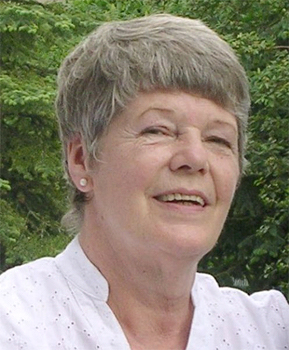
Laryalee (Lary) Fraser
Laryalee was the pen name Lee Fraser chose when she entered the world of poetry. However, most of us in the writing circles knew her best as Lary.
She was born on Vancouver Island in Canada’s westernmost province, British Columbia. However, she spent most of her life living in small BC interior towns. Her employment as a reporter, editor, and photographer for various newspapers helped her to hone skills which she would put to good use as a haiku poet and haiga artist for the last ten years of her life.
In 2000, Lary turned to writing – something she’d enjoyed since childhood. She wrote a lot of rhyming poetry, before turning to other forms and styles, many of which appear on various internet sites. In 2002, she started composing haiku. It was here she found her niche. Although Lary also wrote haibun and tanka, she is probably best known through her haiku and haiga.
Lary was a member of several on-line work shopping forums including WHC Multimedia, Haiku Hut, and AHA. She was a well-respected and much-loved moderator on the AHA Haiku and Haiga Forums, where her generosity and self-effacing nature were felt by all. Many remember her as a mentor and friend, and owe her a great deal of gratitude for her time, compassion, and constant encouragement and support.
Lary’s haiku, tanka, and haiga have appeared in Ambrosia, Asahi Haikuist Network, Atlas Poetica, Chrysanthemum, Clouds Peak, f/k/a, Frogpond, Haiga Online, Haiku Harvest, Hermitage 3, Magnapoets, Mainichi Daily News, Notes from the Gean, Roadrunner, Shamrock, Shiki Internet Kukai, Short Stuff, Simply Haiku, Sketchbook, The Heron’s Nest, Tinywords, Wisteria, World Haiku Review and, posthumously, in A Hundred Gourds and Cattails.
A selection of her work is available on three of her own websites:
She was also very proud of the anthology she compiled with haiku by some of her friends
Awards and Other Honors:
Vancouver Cherry Blossom Festival Contest 1st place, 2010
Vancouver Cherry Blossom Festival Contest (HM or Sakura Awards), 2006 – 2009
Mainichi Daily News 2nd place in Annual Selection, 2005
Shiki Internet Kukai 1st place, August 2005 (free), November 2005 (free theme), April 2006 (free theme), July 2006 (kigo and free)
Shiki Internet Kukai 2nd place, July 2005 (kigo), December 2005 (kigo)
Shiki Internet Kukai 3rd place, February 2005 (free), April 2005 (kigo) February 2006
The Katikati’s Haiku Pathway in New Zealand 2007 -
Fraser, Laryalee (Lary)
Laryalee (Lary) Fraser
August 22, 1940 – October 16, 2013
-
Higginson, William J.
William J. Higginson
-
Kanterman, Leroy
Leroy Kanterman
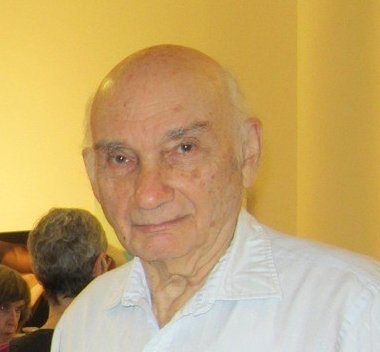 (1923-2015)
(1923-2015)Leroy Kanterman, the cofounder and President of the Haiku Society of America, was born on 2 October 1923 and for many years lived in Forest Hills, Queens, N.Y. During the World War II he served in the U.S. Army.
The Haiku Society of America, created in the winter of 1968–69, was the first formally structured organization devoted solely to Western haiku, and it remained the only one for a number of years. On the evening of 23 October 1968, twenty-three men and women met at Asia House in New York City. Harold E. Henderson, with help from Leroy Kanterman and encouragement from the Japan Society of New York, was responsible for the meeting. Kanterman was chosen to head the group that was known at first simply as the Haiku Society. Regular monthly meetings were scheduled, and these were usually held in rooms of the Asia Society or at the offices of the Japan Society. Simple bylaws were drawn up and adopted at the April 1969 meeting and with this the group became the Haiku Society of America. Leroy Kanterman served as its President in 1968–69, and 1972. Over the years the society has grown to embrace over 800 members from all parts of the United States and the world. Meetings, readings, workshops, awards programs, and various publications have provided members with stimulation and opportunities to learn about haiku and related art forms and to share their work with a wide variety of people who have an interest in haiku. The Haiku Society of America has played and continues to play a vital role in the English-language haiku movement.
The Society's journal, Frogpond, has been published since 1978 and appearing three times per year, it contains haiku and related forms of poetry, articles, reviews, contest results, announcements of the Society, and haiku-related news.
Leroy Kanterman was also the Editor of one of the earliest English-language haiku magazines Haiku West. The magazine was edited and published by Leroy Kanterman in New York City, and appeared twice a year from June 1967 until January 1975. More traditionally oriented, the magazine published many quality haiku and senryu. After the formation of the Haiku Society of America in the winter of 1968–69, Haiku West served as its voice.
The establishment of the American Haiku Archive at the California State Library in Sacramento provided for the first time a focal point and central repository for the American haiku movement. The inauguration of the archive was celebrated in ceremonies on 12 July 1996. It was dedicated to the collection, preservation, and promotion of all haiku and related poetry as a vital component of literature in the English language. A prominent American haiku poet has been selected each year as honorary curator. In recognition of Kanterman’s many decades of haiku writing and his cofounding of the Haiku Society of America, he was appointed as the 2002-2003 honorary curator of the American Haiku Archives.
In 2005 in memory of his late wife, Mildred, Leroy Kanterman made a generous donation to the Haiku Society of America and the HSA Merit Book Award for best first book of haiku was awarded. Sadly Leroy Kanterman died in early October 2015 and in his honour the HSA Executive Committee has decided to rename this award for the first place book, "The Leroy and Mildred Kanterman Memorial Award." [HSA Newsletter, Nov. 5, 2015]
Books & Magazines by Leroy Kanterman:
- Magazine Editor. Haiku west. Forest Hill, N.Y. : L. Kanterman, 1967-75.
- The ram's horn: a collection of haiku-senryu. Kanterman, 1967.
Selected works:
That lazy windmill
Snoozing in the summer sun
Beckoning the breeze.(Haiku Highlights 2:8, August 1966, 9)
Breaking the whiteness
Playful sparrows darting thru
This morning snowfall.(Haiku Highlights 2:11, November 1966, 5)
Beyond the breakers,
mist rides on morning wind
and fishermen stare…(American Haiku 5:1, 1967, #70; Ram’s Horn, L.Kanterman, 1967, 21)
Proclaiming autumn –
lake-side birches and maples
spreading their banners.(Ram’s Horn, L.Kanterman, 1967, 9)
On the water front –
pile upon pile of slag heap
and the smell of fish.(American Haiku 5:2, 1967, #48)
The field now bare
and on the Scarecrow’s arm
a crow has perched.(Haiku West 2:2, January 1969, cover)
Across the old stump,
a spate of scattered leaves
overlaps its shape.(Ram’s Horn, L.Kanterman, 24; Modern Haiku 1:1, winter 1969)
Softly on a leaf
expanding and contracting
silent butterfly(Haiku Highlights 1966; Met on the Road, Higginson, 1993, 9)
Visiting the graves
seeing the place
reserved for me(Frogpond 21:1, 1998, 44)
just turned 90
the nights
seem darker(Frogpond; Fall 2013, Vol. 36 Issue 3, p.5)
Sunset . . .
the scarecrow stretches
across the field(Frogpond 13:3, August 1990, 25; How to Haiku: A Writer's Guide to Haiku and Related Forms by Bruce Ross, Tuttle Publishing (2014), p.16)
winter evening
only my thoughts
give warmth(Frogpond; Spring/Summer 2014, Vol. 37 Issue 2, p.5)
Sources:
http://www.americanhaikuarchives.org/curators/LeroyKanterman.html
http://www.hsa-haiku.org/about-hsa.htm
http://www.thehaikufoundation.org/2010/10/16/essence-4/
http://www.modernhaiku.org/essays/AmHaikuMovement1.htmlOur warm thanks go to Charles Trumbull who for several years he has been compiling the Haiku Database, and allowed us to use it for our haiku researches!
-
Kanterman, Leroy
Leroy Kanterman
RIP
1923-2015
Tribute Page -
Lucas, Martin
 Martin Lucas
Martin Lucas(1962 – 2014)
Martin Lucas, a remarkable haiku poet, essayist, founder and editor of Presence, was found dead in April 2014. His unexpected death shocked the haiku community and resulted in some very touching tributes by fellow haiku poets and friends.
Martin was born in 1962 in Middlesbrough, England. He lived and worked in Preston. He had a B.A. in English Literature from the University of Kent at Canterbury, and an M.A. in Religious Studies from Lancaster University, which included a dissertation on Zen Buddhism. In 2001 he was awarded a PhD in Creative Writing by the University of Wales, Cardiff, for his thesis, Haiku in Britain: Theory, Practice, Context. Martin was president of the British Haiku Society (from 2003 to 2006) and author and co-editor of several books and anthologies. Martin was also a keen bird-watcher and he kept extensive records of his bird sightings and regularly assisted local groups and the British Trust for Ornithology in their efforts to monitor bird population patterns. Some of Martin’s bird haiku were included in two nature-oriented anthologies.
Martin’s “first ‘live’ encounter with haiku took place in the autumn of 1986 at the beginning of a Creative Writing course at the City Lit., Holborn, London, tutored by Mark Williams” (Blithe Spirit, Volume 6 Number 4, December 1996) but his first publications appeared on the pages of Blithe Spirit in the early 1990s. In his tribute to the late Martin Lucas his friend and fellow poet Matthew Paul writes that by 1994 Martin had not only “developed his own style to the point where he was writing classic haiku and his first tanka”, but with each new publication he “continued to hone his style further” and was widely recognised and later featured in numerous anthologies. Martin’s first collection of haiku, bluegrey, was published in 1994; followed by five more until his untimely death in 2014.
Martin joined the British Haiku Society in 1992, and four years later in 1996 with assistance from David Steele, founded Presence – a haiku magazine, specialising in publishing high quality haiku, senryu, tanka, renku and related poetry. “Martin had started preparing for its fiftieth issue at the time of his death. The 49 issues ofPresence that Martin oversaw contain a wealth of contributions from English-language haiku poets across the world; a true global village of like-minded souls who were guided by Martin’s unwavering pursuit of excellence and his encouragement of new talent, intellectual standards and debate of the highest order.” (Matthew Paul, A Hundred Gourds 3:4 September 2014)
Books and Anthology publications:
- bluegrey (Hub Editions, 1994);
- Darkness and Light (1996, Hub Editions);
- ..Click.. (Hub Editions, 1998);
- Violin (Bare Bones Press, 1998);
- Moonrock (Ram Publications, 2002);
- Earthjazz (Ram Publications, 2003);
- Stepping Stones: a way into haiku (British Haiku Society, 2007).
and the anthologies:
- The Iron Book of British Haiku, ed. by David Cobb and Martin Lucas (Iron Press, 1998);
- The New Haiku, ed. by John Barlow and Martin Lucas (Snapshot Press, 2002);
- the tanka anthology, ed. by Michael McClintock, Pamela Miller Ness and Jim Kacian (Red Moon Press , Dec. 2003);
- Wing Beats anthology, ed. John Barlow and Matthew Paul ( Snapshot Press, 2008);
- Where the River Goes, ed. Allan Burns (Snapshot Press, 2013).
Selected work:
song of a greenfinch;
a ray of sun on cold steps
and a few snowdrops…(Blithe Spirit, Volume 3 Number 3, July 1993)
*
evening hush…
a tabby cat
slips through the railings(Blithe Spirit, Volume 4 Number 1, February 1994)
*
a dab of red
in the leafy garden:
the gnome's hat(Bluegrey, 1994)
*
after the goodbye kiss
the sweetness
of a russet apple(Museum of Haiku Literature Award, Blithe Spirit, Volume 5 Number 2, May 1995)
*
train to catch I listen to your violin
(Violin, 1998)
*
with each breath
the pan piper's
eyebrows(Moonrock, 2002)
*
a light rain …
sweeping the moor
the peewit’s cryseed of the reedmace –
the skylark rising
into a wide sky(Wing Beats, Snapshot Press, 2008)
*
a moment before sunrise –
ice singing
beneath the swans’ feet(Winner of the Katikati Haiku Contest, 2010)
*
on Ascension Day
looking to the sky
swifts
spin on the wind
rain falls(the tanka anthology, ed. by Michael McClintock, Pamela Miller Ness and Jim Kacian, Red Moon Press , Dec. 2003)
*
whatever it is,
the swallows’ word
for sparrowhawk —
I hear them crying it
over the fields(Skylark, Summer 2014)
*
too much light
in the darkness
and not enough silence
in the quietness
of a winter night(Skylark, Winter 2014)
Some articles:
- http://haikupresence.org/essays/art-craft
- http://haikupresence.org/essays/related%20forms
- http://www.poetrysociety.org.nz/martinlucas
- http://haiku-presence.50webs.com/essays/lucasessay2.html
- Sources:
- http://www.worldhaiku.net/poetry/eng/uk/m.lucas.htm
- https://breathhaiku.wordpress.com/tag/martin-lucas/
- http://www.makeshifttheatre.co.uk/2014/04/23/in-memoriam-haiku-poet-martin-lucas-1962-2014/
- http://ahundredgourds.com/ahg34/index_feature.html
- http://matthewpaulpoems.blogspot.co.uk/2014/04/martin-lucas_25.html
- http://www.wingbeats.co.uk/contributors.html
- http://www.snapshotpress.co.uk/books/stepping_stones.htm
-
Major, Robert
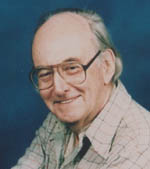 Robert Major
Robert Major(9 August 1920 – 18 May 2008)
Robert Major was born on 9 August 1920 in Cranston, Rhode Island. Robert spent his childhood in Wickford, Rhode Island, later moving to Columbus, Ohio and graduating from North High School in 1937. He served in Europe during WWII as member of the 9th Air Corps, 404th Fighter Group. After the war, he studied at Georgetown University in Washington, DC and earned a degree in Foreign Service. He worked for the government in Washington, DC and in Montreal for several years. He was a professional editor for McGraw Hill in New York before moving to Washington State and the University of Washington Office of Publications. While there, he earned a degree in Fine Arts. He was an advocate for peace, and was instrumental in the founding of the Peace Park in Seattle. He was a lifelong Quaker and a lover of flowers (especially dahlias and dianthus) and his work often illustrates his commitment to the one and his passion for the other.
Robert was a longtime member of the Haiku Northwest group, and most recently attended meetings of the Port Townsend haiku group. In 1997 he published a chapbook of haiku Shadows on the Shoji. He said in this book that he had started writing haiku in 1990. He also served for two years as the regional coordinator for the Northwest region of the Haiku Society of America. His haiku were published in numerous journals in the United States, Canada, Australia, and Japan. He leaves a haiku legacy that exhibited a distinctive style, usually in a 5-7-5 pattern, or close to it, and with memorable, well-wrought images. He was published widely in all the major journals throughout his long and productive career and won several national and international haiku awards.
Robert Edwin Major died 18 May 2008 at the Hospice Care Center in Bremerton, Washington. He lived a life of simplicity, generosity, and kindness and will be greatly missed by his sisters, their families and many friends. Robert is survived by two sisters, Helen “Betty” Major and Mary Jane Leche and her husband The Rev. Edward D.
Awards and Other Honours:
His book Coasting through Puddles: Haiku of Childhood won the Virgil Hutton Haiku Memorial Award 2001 – 2002. Robert has also won several national and international haiku awards. He served for two years as the Regional Coordinator for the Northwest Region of the Haiku Society of America.
Books Published:
- Sunlight through rain: a Northwest haiku year, by Robert Major, Francine Porad, 58 Pages, 1996;
- Shadows on the Shoji (Quahog Press, 1997);
- Coasting through Puddles: Haiku of Childhood (Saki Press, 2001);
- refuge - haiku by Robert Major (ed., Jim Kacian, Red Moon Press postscripts series volume 7, 2008).
Anthologies:
- Haiku in English : the first hundred years, ed. by Jim Kacian; Philip Rowland; Allan Burns, W.W. Norton & Company, (2013);
- No Longer Strangers: Haiku Northwest Twenty-Fifth Anniversary Anthology, ed. by Tanya McDonald, Marilyn Sandall, Michelle Schaefer, Angela Terry, Connie Hutchison, Haiku Northwest / Vandina Press, (4 April 2014).
Selected haiku:
Among the great stones
set to defend the castle . . .
young ferns find(Second Prize, Kusamakura Haiku Contest, 1999)
*
silent Friends meeting . . .
the sound of chairs being moved
to enlarge the circle(The Heron’s Nest IV:8, 2002; Haiku in English : the first hundred years, 2013)
*
Wakened by birdsong;
drifting from one world of dreams
into another(First Place (shared), British Haiku Society, James J. Hackett Haiku Contest, 1999)
*
Reading fairytale
for the third time... grandpa caught
skipping paragraphs
Easter egg hunt;
guiding the steps of the toddler
who hasn't found any
Playing hide-and-seek
on a long summer's evening...
called home one by one(Coasting through Puddles: Haiku of Childhood,2001)
*
In the far corner
at the bottom of the grave . . .
pair of digger’s footprints(Frogpond XXIV:2 , 2001)
*
wish made . . .
concentric ripples
spread away(The Heron’s Nest, Volume IV, Number 1: January, 2002)
*
Sometimes I think . . .
you would answer the phone
if I were to call(The Heron’s Nest VIII:4 (For Francine Porad, 2006); refuge (ed., Kacian, Red Moon Press postscripts series volume 7, 2008).
*
the flute’s first notes . . .
three lavender petals fall
from the arrangement
reaching a wide stream . . .
the trail continues
on the other side(Haiku Northwest 2008)
Sources:
- https://sites.google.com/site/haikunorthwest/poems-by-members/robert-major-memorial
- http://www.thehaikufoundation.org/poet-details/?IDclient=87
- http://www.haikupoet.com/nest/haiku/1003r1137/thn_issue.t1.html
- http://www.graceguts.com/haibun/on-the-other-side-in-memory-of-bob-major
- https://sites.google.com/site/haikunorthwest/Home/no-longer-strangers/haiku-northwest-publications
- https://books.google.co.uk/books?id=xxVk8Gp_NlMC&pg=PT327&lpg=PT327&dq=Robert+Major+haiku&source=bl&ots=g7DILrFO2l&sig=RRQL-wda27M7bO2UF0D4HmtVoU0&hl=en&sa=X&ved=0ahUKEwiC4LnY06nLAhUHuBoKHW4UBf4Q6AEINjAF#v=onepage&q=Robert%20Major%20haiku&f=false
- http://www.worldhaiku.net/poetry/eng/us/r.major.htm
- http://www.redmoonpress.com/catalog/product_info.php?products_id=68
- http://www.brooksbookshaiku.com/othersbooks/sakichapbooks2001.html
- http://www.lewischapel.com/obituary/Robert-Edwin-Major/Poulsbo-WA/544901
- http://www.geraldengland.co.uk/revs/bs078.htm
- http://www.theheronsnest.com/archived_issues/haiku/0401x0723/thn_issue.h5.html
-
Marisova, Svetlana
Svetlana Marisova
March 17, 1990 - September 7, 2011
 Svetlana Marisova was born the only child of a family who knew social and religious persecution in post-Soviet Russia. The family moved to New Zealand in 2004. In her later teens she responded to a perceived call to the cloistered life of contemplative prayer. A diagnosis of terminal brain cancer in late 2009 curtailed the way she was able to live out this vocation.
Svetlana Marisova was born the only child of a family who knew social and religious persecution in post-Soviet Russia. The family moved to New Zealand in 2004. In her later teens she responded to a perceived call to the cloistered life of contemplative prayer. A diagnosis of terminal brain cancer in late 2009 curtailed the way she was able to live out this vocation. Over the remaining two years of her life she wrapped her past and present in even greater cloistered mystery while she tried to come to terms with her future. Fascinated by language as much as she was by the interior silence of contemplation, she gravitated to the combination of both that she could find in writing haiku. In a similar paradoxical manner she hid herself from the world while she reached out to it through the anonymity of human interaction via the social networking complexities of the internet. In cyber-companionship with Ted van Zutphen she worked out her identity as girl/woman, nun/social butterfly, contemplative/wordsmith as together they wrote and studied haiku via digital communications.
Her work has appeared in Contemporary Haibun Online, Contemporary Haibun vol.12, Haiga Online, haijinx, Notes from the Gean, Simply Haiku, Frogpond, Mainichi Daily News, Haiku Society of America haiku wall in Bend, Oregon, and Gong (Association Francophone de Haiku). Articles about her work have appeared in Simply Haiku, Gong, and Haiku Reality. Some of her poems have been included posthumously in the anthologies, The Temple Bell Stops: Contemporary Poems of Grief, Loss, and Change [edited by Robert Epstein] (Modern English Tanka Press, 2012); We Are All Japan [edited by Robert D. Wilson and Sasa Vazic] (2012); and Take Five: Best Contemporary Tanka, Volume 4 (2012).
Some of her writings are available on her blog at http://marisova.com and on http://theartofhaiku.com, that she created as a repository for haiku in collaboration with Ted van Zutphen. Both sites continue to be maintained by her friends.
Awards and Other Honors: First Place, Shiki Kukai 9th Annual Poets’ Choice Awards (2011); Honorable Mention, Vancouver Cherry Blossom Festival Haiku Invitational (2011).
Books Published: Be Still and Know by Svetlana Marisova and Ted van Zutphen (Karakia Press, 2012); Language and Silence by Svetlana Marisova (Karakia Press, 2014).
-
Murtha, H. Gene
H. Gene Murtha
Born 1955 in Philadelphia, Pennsylvania, USA
Lived in New Jersey, USA
19 October 1955 – 9 October 2015 -
Oreč-Gavran, Zdenko
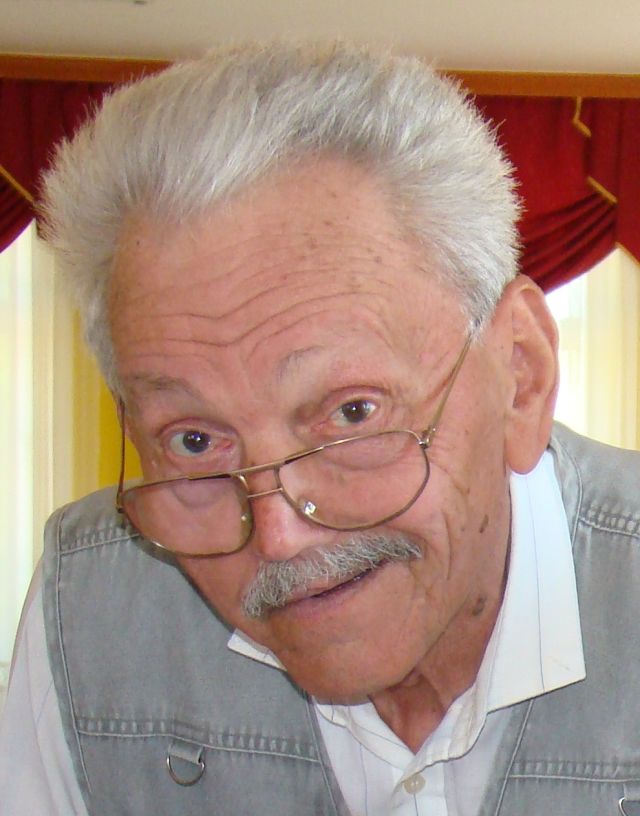 Zdenko Oreč-Gavran
Zdenko Oreč-Gavran(1930 ̶ 2021)
Zdenko Oreč-Gavran was born on 20 April 1930 in the town of Zvečevo, Croatia. He founded the Ludbreg Haiku Meetings (Ludbreški haiku susreti) in the town of Ludbreg, northeast of Zagreb. This gathering of haiku poets has been held every year since 1997 and is open to the public. The first Haiku zbornik - Ludbreg was published in 1998 and included materials from the 1997 gathering. Until 2003 miscellanies were published privately by Oreč-Gavran. The Miscellany was a major publication where poets were invited to contribute haiku to the annual publication, and the selected work was published in the Haiku Miscellany.
Oreč-Gavran was also co-editor of the annual Haiku Calendar/Rokovnik and edited and published annual miscellanies of children's haiku. He was a member of the judging commissions for haiku and senryu. In 2006 he was awarded the annual Ludbreg column of haiku poets, transitional chalice for haiku poets. Besides haiku he was publishing prose, poetry and riddles in a number of journals and newspapers. He issued two collections of aphorisms and a book of puns from children's textbooks. He wrote haiku and senryu in Croatian and the Kajkavian Dialect. Zdenko Oreč died in Ludbreg in 2021.
Awards and Other Honours:
- Zbornik Haiku Konkurs 'AN4-2001'/Anthology Haiku competition 'AN4-2001';
- Encouragement Award, Ito-En, International Haiku Contest (1997);
- Second Prize, International Kusamakura Haiku Competition (1998);
- Second Prize, International Kusamakura Haiku Competition (1999);
- Marijan Čekolj i Marinko Španović: Otvoren put /Free Road: Antologija hrvatske haiku poezije [Croatian Haiku anthology] (Hrvatsko haiku društvo: Samobor, 1999);
- 100 Croatian Haiku [An anthology for the Haiku Cards Game] (DHHP, Zagreb 2000);
- Very good haiku, A-Bomb Memorial Day Haiku Meeting (2001);
- Third Prize, International Kusamakura Haiku Competition (2003);
- Second Prize, Kloštar Ivanić Haiku Contest, Croatian language category (2004);
- Annual Ludbreg column of haiku poets award, Croatia, 2006;
- Second Prize, International Kusamakura Haiku Competition, Japan 2008;
- Commendation, Pumpkin Festival Haiku Contest (Ivanić-Grad, Croatia, 2015).
Haiku/Haiga Books Published:
- Rijeke šume (Rustling Rivers), Ludbreg, 1996;
- Školjka u pijesku (A Shell in the Sand), Ludbreg, 1998;
- Plodovi nesanice: 1991 (Fruits of Insomnia: 1991). Ludbreg, Croatia: published privately, 1999;
- Neprolazni susreti (Unpassable Encounters), Ludbreg, 1999;
- Olovka i kist (Pencil and Paintbrush), haigas painted by Rudi Stopar (Slovenia); haiku by Zdravko Kurnik, Zvonko Petrovic, Julija Ivic, Dusko Matas, Boris Nazansky, Zdenko Oreč, and Rudi Stopar; in Croatian, Slovenian, English and Japanese, Zagreb, 2010.
Selected works:
ona mu okrene leđa
na mjesečini
obrisi brda u porastushe turns her back
in the moonlight
the mountain contour expands(Encouragement Award, Ito-En, International Haiku Contest, Tokyo, Japan, 1997)
ljetni pljusak
pod stablo padaju cvjetovi
na suhosummer downpour
under the tree-crown the blossoms
falling into dry(Second Prize, International Kusamakura Haiku Competition, Japan, 2008)
dostavno vozilo
radi u snijegu ̶
miris kruhaa delivery van
working in the snow ̶
the smell of bread(Second Prize, the International Kusamakura Haiku Competition, Japan, 1999)
TV-sapunicama
ispiru sjećanja
na prljavi ratwith TV serials
they are rinsing our memories
of the dirty war(Awarded (very good haiku) at the 35th A-Bomb Memorial Day Haiku Meeting, Kyoto, Japan, 2001)
sjemenke suncokreta
padaju
u svoju sjenusunflower seeds
falling into
their own shadows(Otvoren put/Free Road, An Anthology of Croatian Haiku Poetry, Croatian Haiku Society, Samobor, 1999. (Edited by Marijan Čekolj and Marinko Španović)
zvonki udarac
grane o krov auta
ispraznio kafićresonant sound ̶
a bough on the car roof
emptied the pub(Haiku No. 21/22, The Assocication of Croatian Haiku Poets, Zagreb, 2004 (Edited by. D. V. Rožić)
priđoh prozoru
da pobrojim ptice
one odlijećuI come to the window
to count the birds
they fly away(Ludbreški haiku zbornik/Ludbreg Haiku Miscellany, Croatia, 2015)
ona miluje
svoj mobitel a dečki
čekaju rundushe is cuddling
her mobile phone ̶ the boys
ordered another round(Third Prize, „Afrodita“ erotic haiku/senryu contest, Ludbreg, Croatia, 2015 (Founded by Mirko Varga)
crna trepavica
na praznom papiru ̶
otvorena zagradaa black eyelash
on a blank paper ̶
an open bracket(IRIS No. 15, 2021, Ivanić-Grad, Croatia), Haiku translated by D. V. Rožić
Sources:
https://www.magicus.info/alternativci-i-korisnici/preporuci-knjigu-tehniku-alternativca/zdenko-orec
https://czkidn.hr/results-of-a-raven-haiku-contest-rezultati-haiku-natjecaja-na-temu-gavran/
http://dominikanac.blogspot.com/2020/11/u-spomen-36-zdenko-orec.html
https://haikupedia.org/article-haikupedia/haiku-in-croatia/
https://thehaikufoundation.org/poet-details/?IDclient=152IRIS International, Year 7th, No.7, 2021, Ivanić-Grad, Croatia
This profile was created in collaboration with Djurdja Vukelić-Rožić and Stjepan Rožić, who took the photograph. We appreciate their invaluable help in preparing Zdenko Oreč’s biography.
-
Pacsoo, Jo
Jo Pacsoo
(10 September 1941 – 19 February 2023)
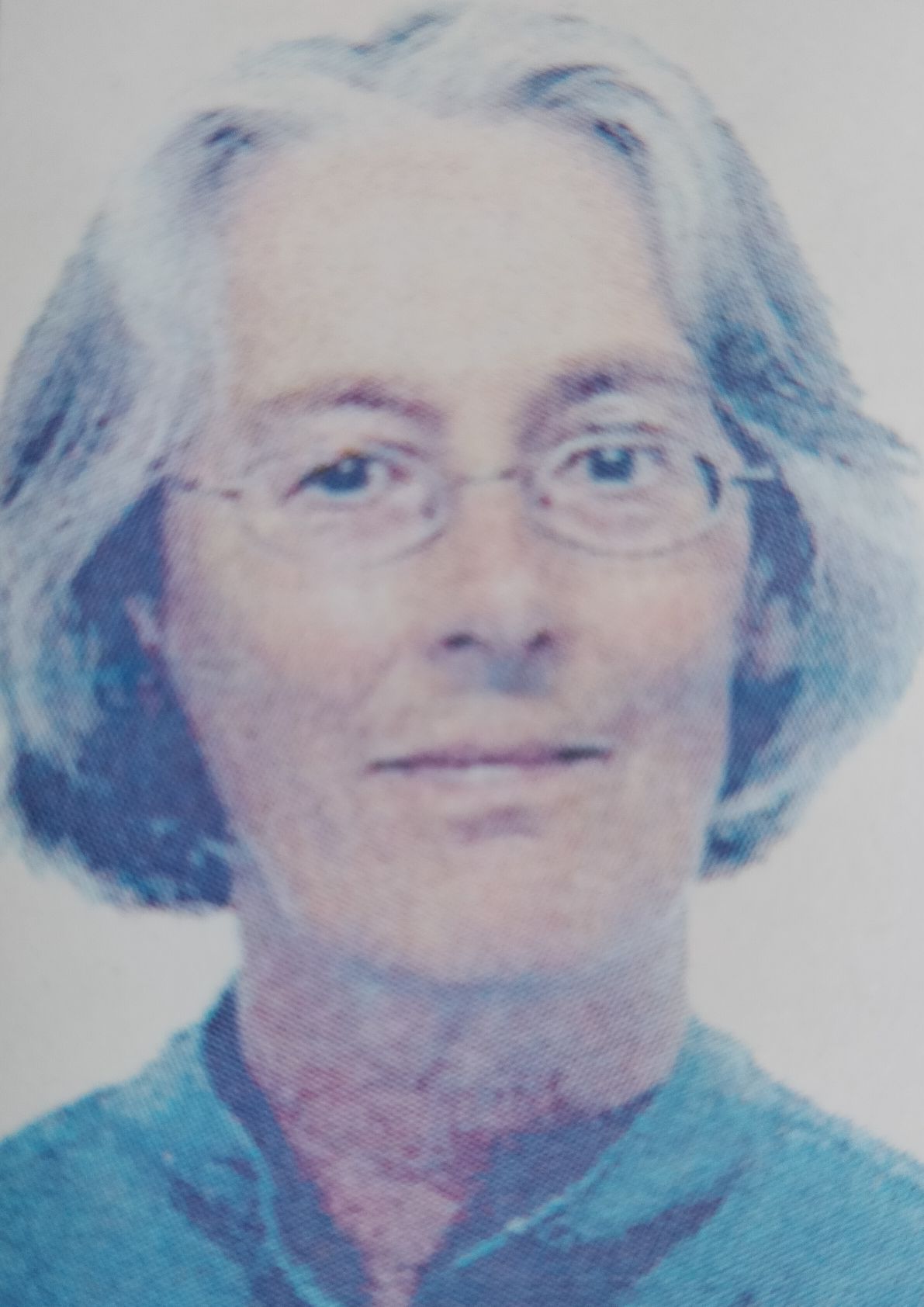 In gratitude to Ruth Lavender and everyone else who attended the Quaker-style Memorial Gathering on Sunday the 12th of March 2023 and to her daughter Tanya & son Mark
In gratitude to Ruth Lavender and everyone else who attended the Quaker-style Memorial Gathering on Sunday the 12th of March 2023 and to her daughter Tanya & son MarkI corresponded with Jo in the 1990s as part of a small group sharing and work-shopping haiku. I first met her in the early 2000s when the British Haiku Society had organised a walk along The Tarka Trail in Devon, staying in various lodgings along the way. As Jo lived in Cornwall, she was able to meet us half-way and continue to the end of the walk. She was a seasoned and strong walker and a pleasure to be with. My strongest memory is of her getting off the bus on the way back before the rest of us: she just had to give everyone a hug as she left.
In 2007, a couple of years after her partner, Frank, died, she moved to Skipton. Her touching haibun (Last Words) about his death was published in Blithe Spirit Vol. 17 No.3, p.32. Before moving from Skipton to Hebden Bridge a year later, she hosted a meeting of the Yorks/Lanks group. She’d lived in Hebden Bridge earlier in her life.
I began to visit her about once a month and we had much joy in sharing haiku, as well as thoughts about haiku and Buddhism. It felt so natural and easy to hug whenever I arrived or left.
It’s easy to see from Jo’s best haikai that she was very intuitive. She kept in touch with her friends who first took Refuge in the Buddha with her on a retreat in Wales in the early 2000s (I think*). This was mainly by phone as they were all from different parts of Britain. But there was one of these friends in particular who she had a deeper connection with and one day she told me this friend had died. Jo had known about this before anyone told her because she felt it the moment this friend passed away.
In 2016 she suffered a stroke and lost sensation in her left arm and leg. She hated being in hospital and wrote an ironic and humorous haibun, Grapes and Silenceabout it. This is included in her last solo book, Wandering(2017).
I visited her several times in hospital and, when she came home, more often than before. We’d chat as usual, then make lunch and afterwards walk in the nearby woods along Hebdon Water. Although she had many Alexander Technique lessons, Reiki and Acupuncture treatments, both her left arm and leg remained stubbornly numb. But she was determined to continue with her walks.
Ruth Lavender writes:
… within weeks of getting home from hospital, she was out and about, doing the things she enjoyed, and proving her ability for independence again. I was astonished at how well she recovered and took back her life, getting out for walks by the river, and even up to Heptonstall - a long steep climb that many people less than half her age wouldn’t attempt!
*The retreat is recorded in her book, Earth Time Water & Sky, 2005
We didn’t see each other much during lockdown as we had differing views about keeping physical distance. So we kept in touch with phone calls, letters and texting haiku to each other. In November 2022 she had a mild heart attack and was in & out of hospital over a period of 10 days or so. When she was finally discharged she had so many health visitors etc, that she needed to rest or just have a quiet time when they weren’t there. She died on the morning of Sunday the 19th of February. A friend surmised that Jo got up and unlocked the door as she was expecting another friend to deliver some herbal remedies. She then went upstairs again to get dressed. The person who was bringing the herbal remedies called her and when there was no answer she went to the bedroom discovered Jo’s body. The cause of death was probably a heart attack.
Her son and daughter contacted me when they arrived at her house and said there had to be an autopsy to establish the cause of death as no one was with her when she died. Her son and daughter were going to see the coroner on Friday the 3rdh of March. At the time of writing there’s no confirmation of the cause of death.
Some of my favourites:
otter prints
left in the sand
a broken eggshell(Blithe Spirit Vol. 24 No.4)
man at the bus stop
the smell of grandmother’s
rheumatism ointment
(Big Field, collection 2021)the quiet of fading day
a fox cub
in the open doorway(Earth Time Water & Sky, collection 2005)
woods free of people
embraced by a beech tree
at dawn(Time Haiku#52)
The last haiku refers to a particular experience. Ruth Lavender again:
She didn’t like to eat lunch at cafés because she felt she made too much of a mess, though she did enjoy a hot chocolate and a pastry outside at Hebden Bridge Railway station.There is a tree accessible from one of the paths behind the station, which has grown in such a way that the large trunk forms a niche that is just big enough for a small adult to sit in. To me this will always be Jo’s tree! We would walk that way, and she would scramble up to sit in the tree, surrounded, and with the world outside dampened by the protection of the tree - and she would recite a long Buddhist poem as a prayer while sitting in the tree niche.
Someone else at the memorial said that Jo said she’d like to die sitting in that tree and let it grow around her. This person also used to massage her feet; he said that if she was in a grumpy mood when he started, she would be smiling before he finished. Several other people made references to her taciturn nature, as well as to her need for hugs. A particular man and Jo evolved a unique way of hugging: as he breathed out she breathed in and vice-versa and, in this way, his belly went out as hers went in, hers went out as his went in. They once spotted each other in the street and he crossed over and they had one of these hugs there and then. Jo wasn’t generous with her hugs; she was also thoughtful and generous with possessions she no longer had a use for. On one of my visits we took her sleeping bag and some blankets and clothes to the park to give to some people sleeping rough in a concrete shelter.
More memories from Ruth:
I first met Jo at Ralph’s group, and later she attended Hebden Bridge Quaker meetings for a time, before falling out with Hebden Bridge Quakers [Jo went to Quaker groups when there was no Buddhist group which had enough in common with her Tibetan tradition nearby]. I know she valued lasting connections with Skipton Quakers. One time when I was with her, she'd got upset and shouted, and I knew it wasn't really at me. As usual she rallied round and apologised, and I said to her "I can cope with being shouted at, even if I'd rather not, but if you throw anything at me I'm throwing it right back at you!" and she laughed, it was a lovely moment. I can imagine she was visualising, as I was, us picking stuff up and hurling it at each other, with no regard for age or other frailties.I'm grateful Jo had meaningful connections with so many people. She could feel so alone, and yet nearly every day someone visited or phoned her.
The memorial began with Ralph leading us in singing a short Taizé song (sung in parts or as rounds and repeated until the singing comes to a natural end). He did the leading in a gentle way with a steady beat that made it easy to follow and join in. These songs occurred a few more times, when it seemed right. Ralph also told a little story about Jo visiting the Taizé group after her stroke (when she’d lost her sense of pitch): as the group was singing he noticed her moving forwards and backwards in time to the music with one hand on her heart. Ruth tells me it would have been a Dance for Universal Peace. When this is done with a group of people they form a line with one hand on the heart and the other on the shoulder of the person in front.
In her last few years Jo often said she didn’t want to live any longer, though she wasn’t suicidal. She kept a do not resuscitatecertificate in full view in her living room and carried a copy with her when she was out waking. Her daughter told me these thoughts went back further than I’d thought. On reflection, I have the feeling they date back to when Frank died, and probably became more powerful after she intuited the death of the friend she took first refuge with on the retreat in Wales.
Write-up by Fred Schofield
Publications:
- Earth Time Water & Sky, Jo Pacsoo (Palores Publications, 2005)
- Chiaroscuro, Jo Pacsoo (Palores Publications, 2009)
- Wandering, Jo Pacsoo (self-published, 2017)
- Big Field, Jo Pacsoo, Stewart Metcalfe & Fred Schofield (Hub editions, 2021)
Selected poems:discussing funerals
a grey wagtail sings
in an oak treea kingfisher
flashes past
the still heron’s reflection(Time Haiku #47)
reflections
at a holy well – the taste
of wild watercontemplating
death the yellowness
of kingcupsinto the slow dawn
of the shortest day
wild geese(Beyond Words/Отвъд думите, Farago, 2018)
after the waterfall
the quiet wood
drips mosssilent in starlight the frozen pond
(Blithe Spirit Vol.22 No.2)
a skein of geese
unfurls the sky
saltmarsh stillness(Blithe Spirit Vol.24 No.1)
waterlogged trees
lean into the river
a dazzle of crocus(Blithe Spirit Vol.24 No.2)
tumbled stones
cushioned in moss
the river’s rush(Presence #52)
-
Peixoto, Afrânio
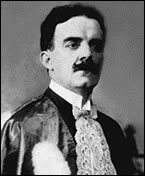 Afrânio Peixoto
Afrânio Peixoto(1876 – 1947)
Afrânio Peixoto was born on 17 December 1876 in Lençois, Bahia. He was a physician, professor of
Legal Medicine, writer, poet, founder of the Brazilian Academy of Philology and member of Academia Brasileira de Letras. He started writing in 1900 and published more than 30 works, among them, drama, romance, biographies, and more - Rosa Mística (1900), Trovas brasileiras (1919), História da Literatura brasileira (1930), Miçangas (1931) etc.
It was Peixoto who made haiku known to readers when he published in 1919 his book Popular Brazilian Trovas (Trovas Populares Brasileiras). This book contains a collection of 1000 Brazilian quatrain poems and a few haiku. Up to 1919 haiku was not as well known in Brazil, even though a few had been published.
The trova was the closest Brazilian poetic form to haiku until then. It consists of four verses with seven metric syllables each and at least a pair of ending rhymes in the second and fourth verses. As Peixoto states in the Preface of his book, trova “is our most basic art form,” since it contains “a fugitive state of the soul, a long hug of the heart, desire, complaints, satisfaction, malice, judgment . . . reported to others with sincerity and simplicity.” It is also in the preface that the term haikai is mentioned. According to the author, the Japanese also have their elemental form of art: the haikai. For him, haiku is a lyric epigram, i.e., a small poetic form, poignant or critical.
Between 1904 and 1906, Peixoto was in several European countries in order to acquire new knowledge. By this time Paul-Louis Couchoud (1879 – 1959), a young medical student and writer, and two friends were publishing Along the Path of Waters (Au fil de l’eau) (1905), containing 72 Japanese poems. In 1904, Couchoud went to Japan to spend a year studyingJapanese language and culture, and a year later, he published his poems. Peixoto mentions Couchoud in a footnote in the preface of his book of trovas, referencing Couchoud’s book Asian Sages and Poets (Sages et Poets d’Asie), which republished the author’s haiku. The mention of haiku in Peixoto’s book is brief, and offers four examples of haiku for comparison with trova, from where the haiku below was extracted:
Esta corola de lírio
Quer continuamente
Me voltar as costasThis lily’s corolla
wants continuously
to turn its back to meIn 1931, Peixoto again published haiku in his book Beads (Missangas). This book contains an essay on haiku, “The Japanese haiku or Lyric Epigram” (“O Haikai Japonês ou Epígrama Lírico”) followed by 52 haiku, almost all of them with a rigid metric of 5-7-5 syllables and a title in capital letters:
SÓ OS OUSADOS SÃO FELIZES
Sem pedir, o vento
Derruba as flores do chão . . .
Eu nunca ousei.ONLY THE BRAVE ARE HAPPY
Without asking, the wind
Sheds the flowers on the ground . . .
I never dared.On 5 October 1934 Afrânio Peixoto was awarded the Grand Cross of the Military Order of St. James of the Sword of Portugal. He was also Rector of the University of the Federal District in 1935 and after 40 years of outstanding service, he retired. Afrânio Peixoto died in Rio de Janeiro on 12 January 1947 at the age of 70 years.
Books published:
- Rosa mística - drama (1900)
- Lufada sinistra - novela (1900)
- A esfinge - romance (1911)
- Maria Bonita - romance (1914)
- Minha terra e minha gente - história (1915)
- Poeira da estrada - crítica (1918)
- Trovas brasileiras
- Parábolas
- José Bonifácio, o velho e o moço - biografia (1920)
- Fruta do mato - romance (1920)
- Castro Alves, o poeta e o poema
- Bugrinha - romance (1922)
- Ensinar e ensinar
- Dicionário dos Lusíadas - filologia (1924)
- Dinamene
- Arte poética - ensaio (1925)
- As razões do coração - romance (1925)
- Camões e o Brasil - crítica (1926)
- Uma mulher como as outras - romance (1928)
- Sinhazinha (1929)
- Miçangas
- Viagem Sentimental
- História da literatura brasileira
- Castro Alves - ensaio bibliográfico (1931)
- Panorama da literatura brasileira
- Pepitas - ensaio (1942)
- Amor sagrado e amor profano
- Despedida
- Obras completas
- Indes
- É
- Breviário da Bahia
- Livro de horas
Selected work:
Na poça da lama,
Como no divino céu
Também passa a luaIn mud puddle
as the divine sky,
Also passes the moon.*
A BELEZA ETERNA
O sabiá canta,
Sempre uma mesma canção:
O belo não cansa.EVERLASTING BEAUTY
The mockingbird sings,
Always the same song:
The beautiful does not tire.*
COMPARAÇÃO
Um aeroplano
Em busca de combustível . . .
Oh! é um mosquito.COMPARISON
An airplane
In search of fuel . . .
Oh! it’s a mosquito.*
CRÍTICA À CRIAÇÃO
O boi come a grama
E nós o boi. Deus não teve
Imaginação.CRITIQUE OF CREATION
The ox eats the grass
And we eat the ox. God had no
Imagination.(Trovas Populares Brasileiras, Rio de Janeiro [etc.] F. Alves, 1919)
This profile was created in collaboration with the Brazilian poet Rosa Clement. We are very grateful for her help and support!
Sources:
- https://pt.wikipedia.org/wiki/Afr%C3%A2nio_Peixoto
- http://www.thehaikufoundation.org/omeka/files/original/3a31681d7407cccf82631a2b0657c89d.pdf
- http://www.thehaikufoundation.org/omeka/files/original/a718b8abfbbdb0e31fcd4ece5f372b54.pdf
- https://catalog.hathitrust.org/Record/001057369
- http://www.sumauma.net/artigos/artigo-rosa1.html
- http://www.antoniomiranda.com.br/poesia_brasis/bahia/afranio_peixoto.html
- http://www.kakinet.com/caqui/brasil2.htm
“Zen in Brazil: The Quest for Cosmopolitan Modernity” by Christina Rocha, University of Hawaii Press, 2006.
-
Quine, Stuart
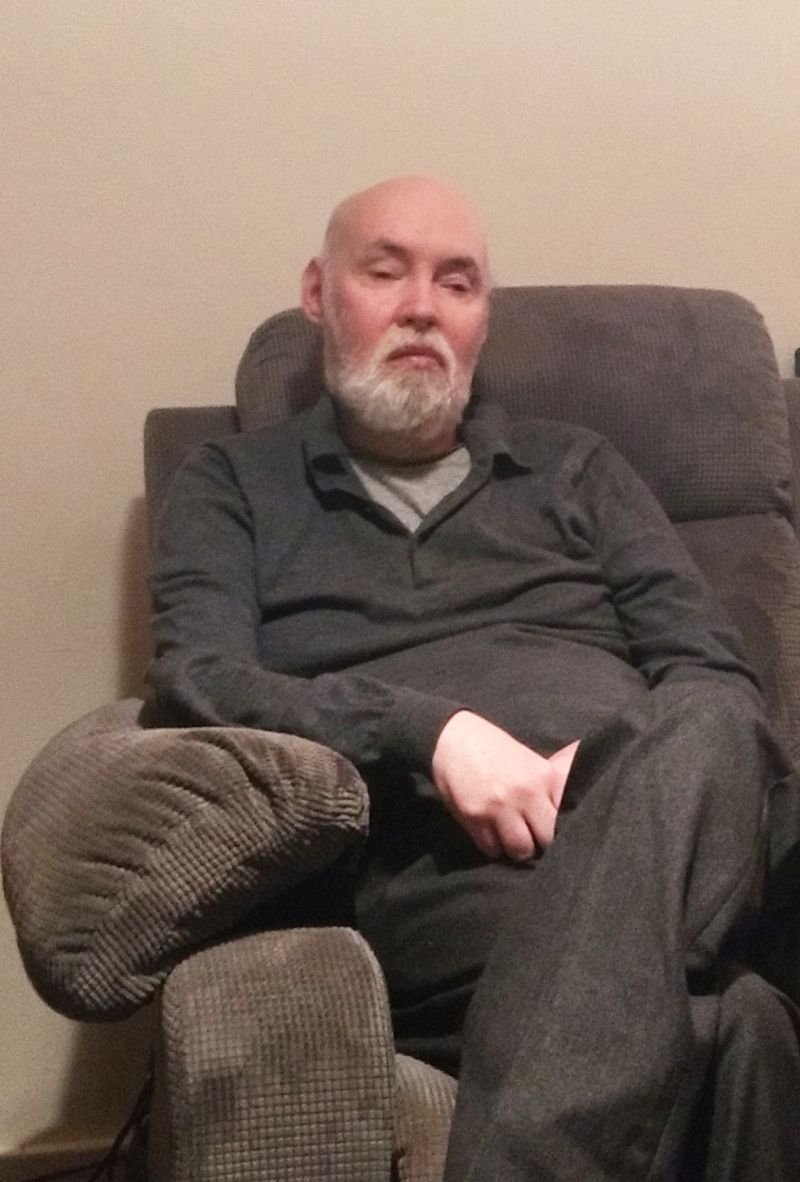 Stuart Quine
Stuart Quine(3 November 1962 – 24 March 2020)
Stuart Quine was born in Helsby, near Runcorn, UK, in 1962 and after working in various fields, including time in a paint factory and studying for a teaching degree, he became an Intensive Care nurse, a vocation he practised until ill-health, in the form of myotonic dystrophy, forced early retirement. Stuart loved travelling and despite visits to Morocco, Japan and Australia, one of his few regrets was that he didn’t travel more. He spent his final years in Sheffield and died on March 24, 2020, from complications arising from the Covid-19 virus.
Steeped in a deep respect for the Japanese haiku and senryu tradition, Stuart Quine was known in the English-language haiku world for his one-line ‘monoku’ style. Within the one line of his haiku, however, he respected and reflected the rhythmic 'three-part' structure of Japanese haiku, as well as such essentially Japanese qualities as ‘karumi’, 'wabi/sabi’, the device – for the rhythm – of the ‘kire' and, sometimes, even a ‘kigo.'
Stuart’s work was published regularly in the journals, including Presence, of which he was, for a time, co-editor, and also appeared in anthologies. He was also a fine writer of haibun.
In spite of having been writing and publishing haiku since 1998 it was not until 2018 that Stuart’s first collection, Sour Pickle was published, by Alba Publishing. This was followed in 2019 by his second, and final, collection, Wild Rhubarb, which was awarded Third Place in the Haiku Society of America’s Merit Book Awards (Leroy & Mildred Kanterman Memorial Award) 2020.
A couple of the selected haiku below appear in these two collections but in a slightly different form, as edited by Stuart. He did a lot of 'fine-tuning' before publication:
like the honed edge of a blade keen is the cold
(Sour Pickle (2018), as ‘crescent moon like a honed blade keen in the cold’)
winter moon a glint of wolf in the mongrel’s eyes
(Wild Rhubarb (2019), as ‘winter storm a gleam of wolf in the mongrel’s eyes)
A practitioner of Soto Zen Buddhism for over 30 years, Stuart regarded his haiku writing as a dao. He was an active member of the Redthread Haiku Sangha and inspired, and encouraged the publication of, Unravelling – the Redthread Haiku Sangha anthology 1997-2019, (Alba Publishing, 2020).
Just a few days before he died, Stuart had emailed the sangha with a customary spring greeting – he always liked to mark the equinoxes – and ended his email with what turned out to be perhaps his final (and unusually for him, three-line) haiku:
Spring equinox –
a brimming bucket
mirror for a starAwards and Other Honours:
Wild Rhubarb, Third Place in the Haiku Society of America’s Merit Book Awards (Leroy & Mildred Kanterman Memorial Award) 2020
Stuart served as a member of The Haiku Foundation’s 2016 Touchstone Distinguished Books Award Committee.
Publications:
Sour Pickle - one-line haiku, Alba Publishing, May 2018, UK;
Wild Rhubarb - one-line haiku, Alba Publishing, March 2019, UK;
Unravelling - the Redthread Haiku Sangha anthology 1997-2019, Alba Publishing, February 2020. (contributor)
Selected haiku:
From Sour Pickle (2018):
hidden and unseen the burgeoning life in buds and bellies
through driving rain the ambulances’ dopplering sirens
snagged in machair a gull feather unzipped by the wind
distant thunder the old mouser raises an ear
“Not yet, not yet” says the bubbling beck
winter solstice darkness gathers in the unrung bells
under mistletoe on her lips a tang of tamarind
*
From Wild Rhubarb(2019):
round midnight moonlight playing on the piano hammers
a short night shrunk to a dog bark and the clanking of the trams
through the haze the headlights of a hearse
lassitude and languor these days without rain
*
new year’s day only the rain comes to my gate
(Presence #14)
*
along the strandline seaspray and sunshimmer in knotted kelp
(Wind over Water (4th Pacific Rim Haiku Conference anthology)
*
almost weightless this empty skull that held the robin’s song
(Presence #57)
Sources:
https://www.thehaikufoundation.org/poet-details/?IDclient=632
We are very grateful to Stuart’s publisher and friend Kim Richardson who wrote this tribute to an amazing poet and master of the monoku!
-
Reichhold, Jane
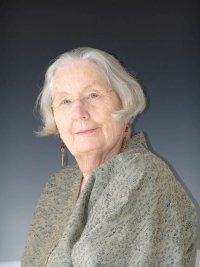 Jane Reichhold
Jane ReichholdBorn 1937 in Lima, Ohio, U.S.A.
Died in 2016
I’ve been writing haiku since the 1960s and have published over 40 books of haiku, renga, and tanka. I have translated 7 books from the Japanese with the best seller being Basho The Complete Haiku. Writing and Enjoying Haiku, also published by Kodansha, along with A Dictionary of Haiku, by AHA Books, are still often on Amazon’s best-seller list. The latest tanka book, was translated with Machiko Kobayashi from Akiko Yosano’s most famous book, Midaregami – Tangled Hair. AHApoetry.com was started in 1995 and AHAforum is the place poets meet online since 2006. -
Škrgulja, Vida Pust
 Vida Pust Škrgulja
Vida Pust Škrgulja(1952 - 2021)
Vida Pust Škrgulja was born in Ljubljana, Slovenia in 1952. She graduated in Latin and History of Art from the Department of Philosophy at University of Zagreb, and spent her working years as a teacher of Latin and Arts in high schools in the towns of Ivanić-Grad and Križ, Croatia. Beside her teaching career and family, being a mother of four daughters, she spent her time on a number of activities, promoting arts and culture. By founding the association Amici hereditatis (Prijatelji baštine; Friends of heritage) in Ivanić-Grad, she started the process of founding the first museum in this town and was its first director. Through the decades she set up a number of exhibitions for local artists.
Škrgulja started writing haiku in the 1970s and was among the first haijin in Ivanić-Grad.
In 2003 together with Djurdja Vukelić Rožić and Stepan Rožić they inaugurated the Kloštar Ivanić Haiku Meetings (Kloštar Ivanić haiku susreti) and later in 2006 also founded the Haiku Association “Three Rivers” in Ivanić-Grad. Vida Pust Škrgulja was on the editorial board of the magazine IRIS and a judge for haiku and haiga contests. She wrote haiku in Croatian, Slovenian, Latin and English, and her work was featured in numerous miscellanies, anthologies and journals in Croatia, Slovenia, United Kingdom, USA and Japan. She has won several national and international awards as well. Vida Pust Škrgulja was bestowed Lifetime Achievement Award by the town of Ivanić-Grad in 2007. She died in Ivanić-Grad, Croatia in 2021.
Book published:
Sedam prozora / Seven Windows by Vida Pust-Škrgulja, Ljerka Poštek-Jelača, Djurdja-Vukelić Rožić, Marica Behtan-Cecelja, Franko Bušić, Stjepan Rožić and Robert Stipić. Ed. by Djurdja Vukelić Rožić, Kloštar Ivanić, Croatia: Agapa, 2002.
Some awards and honours:
- Encouragement Award, Ito-En, International Haiku Contest, Tokyo, Japan, 1997;
- Third Prize, The International Kusamakura Haiku Competition, Japan, 2000;
- Award (third choice), WHC R. H. Blyth Award, 2002;
- Lifetime Achievement Award by the town of Ivanić-Grad, 2007.
Selected works:
snježno jutro
u košari na polici
proklijao češnjaksnowy morning
in the basket on the shell
the garlic has sprouted(Encouragement Award, Ito-En, International Haiku Contest, Tokyo, Japan, 1997)
lastavice lete
nad ljetnom kućicom
uhvaćenom u čaši vinaswallows fly
above the summer house
caught in a glass of wine(Third Prize, The International Kusamakura Haiku Competition, Japan, 2000)
obasjano suncem
na plavome dnu ̶ stablo
uz jato ribalighted by the sun
on the blue bottom ̶ a tree trunk
among fish(Letni časi haiku magazine No. 16, Ljubljana, Slovenia, 2002)
jutarnji vlak
snježnim se ljestvama penje
sve brže i bržemorning train
climbing the snowy ladder
faster and faster(Award (third choice), WHC R. H. Blyth Award, 2002)
dječji se smijeh
uvukao
u gitaru na ziduthe children's laugh
crept into
the guitar on the wall(Sedam prozora/Seven Windows, joint haiku collection, Ivanić-Grad, Croatia, 2002)
na dnu škrinje
svežanj pisama i
svilena vrpcaat the bottom of the chest
a bundle of letters and
a silk ribbon(Blithe Spirit Vol 14 No 3, September 2004)
na dnu srebrne čaše
u staretinarnici
tragovi crnog vinaat the bottom of a silver cup
in an antique shop
stains of red wine(World Haiku 2006 No 2, WHA Japan)
noć bez zvijezda
u jednom prozoru
treperi svjetlostarless night
in one of the windows
flickering candle-light(Shamrock, Issue 6, Focus on Croatia, 2009)
umor večeri
rasplinu se pogledom...
zvjezdano neboevening fatigue
scattered in the gaze...
a starry sky(To the memory of Vladimir Devidé, the Kloštar Ivanić Joint Haiku Collection, Croatia, 2011)
stara singerica
u ladici unuk sakrio
svoje blagoin the drawer of
an old sewing machine
my grandson's treasure(Igračke/Toys, post contest anthology, the Haiku Association „Three Rivers“, Ivanić-Grad, Croatia, 2017)
starac, drščući
u vrećama otpada
traži darovea trembling old man
in search of Christmas gifts
through the bags with waste(IRIS No. 11, the Haiku Association „Three Rivers, Ivanić-Grad, Croatia 2017)
Haiku translated by the author.
Sources:
- Anthologies Nepokošeno nebo/An Unmown Sky 1 and 2, Croatia, 2011 and 2018
- IRIS International, Year 7th, No.7, 2021, Ivanić-Grad, Croatia
https://www.centarkulture.com/vida-pust-skrgulja/
http://www.worldhaiku.net/poetry/si/v.pust.skrglja/v.pust.skrglja.htm
https://www.youtube.com/watch?v=7EE3cAFpXfs
https://www.youtube.com/watch?v=qy3yUjkGncM
https://hrcak.srce.hr/file/381501
https://haikupedia.org/article-haikupedia/haiku-in-croatia/
https://tri-rijeke-haiku.hr/?cat=8&lang=en
This profile was created in collaboration with Djurdja Vukelić-Rožić and Zdenko Vanjek, who took the photograph. We appreciate their invaluable help in preparing Vida Pust Škrgulja’s biography.
-
Slater, Brendan
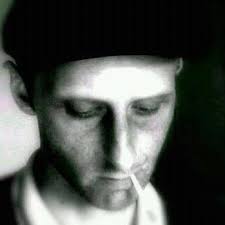 Brendan Slater
Brendan Slater(10 November 1971– 15 September 2022)
Brendan Slater was born in Stoke on Trent, England on November 10, 1971. He spent most of his life there save for a brief time in the Netherlands. He was a software developer, a brilliant poet and most importantly a father to his son Jonah, whom he affectionately called Joe.
Brendan was an accomplished publisher, editor and poet and was responsible for several books and the beloved E-zine Moongarlic. His publication credits are extensive.
He began experimenting with Japanese short form poetry in 2009 and the rest is history. He took to it and found in it a new passion. His aesthetic was minimalist and he excelled at it.
Brendan spent much time workshopping on Jane Reichhold’s AHA poetry forum and when it folded upon Jane’s passing in 2016, he followed the AHA crowd to what is now Inkstone Poetry Forum.
By this time, Brendan was writing tanka as he felt it gave him more artistic freedom and allowed him to color outside the lines as he loved to do. His work was raw and audacious. He wrote honestly and bravely from his own life experiences, holding nothing back.
This is the last tanka he posted on Inkstone a week before his death:
everybody knows
of the darkest violations
I’ll never confess—
something of the night
will always be inside meIn true Brendan form, it is indeed raw and telling. He lived a rich if dangerous life and was unafraid to share it with the world. “You know I just want to be provocative, stace” he would say to me. And he was.
He was most prolific early on while writing haiku, and he published and edited several books.
His credits include:
- Four Virtual Haiku Poets, eds. Brendan Slater and Alan Summers; Haiku by Scott Terrill, Brendan Slater, Colin Stewart Jones and Michael Goglia; Introduction by Alan Summers, (Yet To Be Named Free Press, 2012);
- In Bed With Kerouac, Brendan Slater, Introduction by Michael McClintock, (Yet To Be Named Free Press, 2012);
- Rum, Sodomy and the Wash, Brendan Slater, (CreateSpace Independent Publishing Platform, 2012);
- Yellow Light: Haiku, by Jack Galmitz, with forward by Brendan Slater, (Yet To Be Named Free Press, 2013);
- 2.2.: Anthology of short verse, Brendan Slater & Alan Summers, (CreateSpace Independent Publishing Platform, 2013);
- Dream Language {For 3 Voices}, Hannah Mahoney, Brendan Slater, and Jack Galmitz, (Yet To Be Named Free Press, 2013).
His work was often selected for publication in print periodicals including Acorn 25 (Fall 2010) and Atlas Poetica 17 (Spring 2014).
Online, his work appeared in the following journals:
A Hundred Gourds, Notes from the Gean, Bones, Electronic Poetry Network,his own E-zine Moongarlic, Per Diem, The Heron’s Nest, Tinywords, Contemporary Haibun Online, Daily Haiga, The Living Haiku Anthology and others.
He was also listed on Krzysztof Kokot’s “The European Top 100 Most Creative Haiku Authors” for 2010 and 2011.
Brendan and I followed each other from AHA to Inkstone and realized we were kindred spirits through poetry. We began to converse almost daily about poetry and our lives. He was overjoyed about his burgeoning relationship with his son, Joe. He shared with me all their visits, their coffees with vanilla slices and whatever else was going on.
We would send our tanka back and forth across the pond, each of us eager for the other’s input, open and willing to learn together.
We both struggled with our mental health and found great support by sharing our experiences. We propped each other up.
In late 2021 Brendan became interested in my free verse and wanted to try it for himself. He was of course, wonderful at it. He was incredibly inquisitive and absorbed knowledge like a sponge. “Why did you choose that word there, stace”, “How did you decide you wanted the enjambment on that line”, “What were you thinking when you wrote this particular strophe”. His curiosity was boundless.
Through the rest of 2021 and into 2022 Brendan, or B, as I called him, would send me free verse regularly and ask for my input. I did the same with him. In March of 2022, B wrote a piece called “The Touch”. He forwarded it to me and neither of us made any changes to it. It was perfect.
It was the last thing published in his life. It appeared in Pages Literary Journal on September 8, 2022 approximately a week before his passing. I hope he knew about it.
The Touch
by Brendan SlaterMy understated swagger
and sincere half-truths, the subtext
you almost but never read;
until it’s too late, to forget
what you swear to remember,
and I’ll be long-gone-here-forever.Although we never met in person, B was my friend and a friend to all his peers on Inkstone and throughout the poetry world. We will never forget his unflinching penchant for writing the truth and sharing his experiences with us all.
There is a huge hole in the world without his voice and I for one, still see his light shining brightly and use it to guide me along my way every day.
We’ll take it from here, B -- rest easy, my friend. You are missed.
Stacey Dye
Some selected memorable work:we share
bitter coffee
first light(Acorn 25 Fall 2010)
*
dawn . . .
the secrets
behind my door(Daily Haiga, January 2, 2011)
*
night sky . . .
everything
I have lost(Daily Haiga, October 11, 2011)
*
grasping
at prayer
moonrise(Four Virtual Haiku Poets, 2012)
*
no moon
i explore
my inner space(Notes from the Gean 2.3)
*
rusty gate
the beaten track
of its swing(The Heron’s Nest 12.2)
*
pewter sky
the litany
of the oceanno moon
i explore
my inner space(In Bed With Kerouac, 2012)
*
I wake 100 yards from where I last remember
(Rum, Sodomy & the Wash, 2012)
*
made up
prefabricated gray—
is this the last
image my child
has of me?(Atlas Poetica, 17 Spring 2014)
*
a spatter
of raindrops on the window
abnormal cells(In Bed With Kerouac, 2012; THF Per Diem selection, Loaded, 2018)
*
we are all as old as each other……..stardust
(posted on Inkstone on July 11, 2022; provided by Jenny Angyal, Global Moderator at Inkstone Poetry Forum)
Some of Brendan’s books are available to read here:
- Four Virtual Haiku Poets –https://www.thehaikufoundation.org/omeka/files/original/dc429826288ff127b59cbef0f1dc5c1a.pdf
- Dream Language – https://www.calameo.com/read/0020057834396ab5a01ff
- In Bed With Kerouac – https://www.calameo.com/read/0010953721737f6d4c618
***
With gratitude to Stacey Dye who produced this tribute and for all the contributions and kind messages from Brendan’s friends and fellow poets Jenny Angyal, Marion Clarke, Alan Summers, and Rebecca Drouilhet.
-
Španović, Marinko
 Marinko Španović
Marinko Španović(1955-2011)
Marinko Španović was born in Samobor, Croatia in 1955. He has been writing within the literary group ‘Katarza’ in Samobor since 1975. His haiku have been published in many haiku journals and magazines, such as South-West, Daily Yomiuri, Mainichi Daily News, Feasta, Woodpecker, and others. Marinko edited over 30 haiku collections and anthologies, and wrote a number of book reviews. He was a selector and a translator to and from English, presented in many anthologies. Marinko has published six books: two books of poetry and four bilingual haiku collections. He was also an editor at Sparrow (Vrabac) – the magazine of the Croatian Haiku Association. Marinko was not only one of the most presented Croatian haiku poets but he also won numerous awards and honours both national and international.
Marinko Španović died unexpectedly in Samobor on 8 July 2011.
Awards and Other Honours:
- Third Place, 300th Anniversary of Basho's 'Oku No Hosomichi' and Days of Japanese Culture and 'NHK' Japanese TV (1988);
- Mainichi Haiku Contest (1998);
- Toranomon Haiku Newsletter by Sakuzo Takada (1999), 101 Haiku (edited by Sakuzo Takada and Fusao Maki); Favourite Haiku, Tom Noyes, Azami Yutaka Ikokku Santo (1998);
- Commendation by Polish Haiku Society for haiku cyclus Slavonske šume/Forests of Slavonia and for long time collaboration (2000);
- Choice of haiku, The Herb Barrett Award (Hamilton, Canada, 2000);
- Mainichi Daily News Haiku Column (June 2001);
- Commendation, Haiku Calendar/Rokovnik, Ludbreg, Internationl Haiku contest in English (2001);
- Honourable Mention, HIA 4th haiku contest (2002);
- Award, Ito-En, International Haiku Contest (2003);
- First Prize, Haiku Day, Dubravko Ivančan (Krapina, 2003);
- Third Prize, Kloštar Ivanić Haiku Contest, Croatian language category (2003);
- Commendation, The 39th A-Bomb Memorial Day (2005), Third Prize, International Kusamakura Haiku Competition (Kumamoto, Japan, 2005);
- 22nd Prize, Kloštar Ivanić Haiku Contest, Croatian language category (2005);
- Honourable Mention, Mainichi Haiku Contest (2005);
- First Prize, Haiku Day, Dubravko Ivančan (Krapina, 2006);
- Genkissu! Spirits Up! World Wide Hekinan Haiku Contest Award in Japan (2007);
- Second Prize - Kloštar Ivanić Haiku Contest, Croatian language category (2010).
Books and some other publications:
- Planinski vjetar / Mountain Wind, Edition Matsuo Basho, Haiku poetry, Razvigor, Požega (Ex-Yugoslavia, 1988);
- Duga / The Rainbow, Haiku poetry, Edition Matsuo Basho, Dom kulture Odžaci (Ex-Yugoslavia, 1989);
- Poljubac svjetlosti / Kiss of Light (Hrvatsko haiku društvo: Samobor, 1995);
- Brbljanje o neizrecivom / Gassing about the Unspeakable (Hrvatsko haiku društvo: Samobor, 1998);
- Otvoren put/Free Road, Anthology, editors: Marijan Cekolj, Marinko Spanovic, Samobor 1999);
- haiku selected for inclusion in William J. Higginson's Haiku World, An International Poetry Almanac (Kodansha International, 1996);
- 10 haiku selected for inclusion in A. Duhaime's Canadian Anthology, Haiku Without Borders (1998); haiku selected for inclusion in Knots: The Anthology of Southeastern European Haiku Poetry [edited by Dimitar Anakiev and Jim Kacian] (Prijatelj, Slovenia, 1999; distributed by Red Moon Press).
Selected work:
dječji crtež
iste su boje tenk
vojnik i suncea child's drawing:
the same color for tank,
for soldier, and sun(Haiku in Wartime (Croatian Haiku Association, 1992); also in Frogpond 22:2 (1999)
*
nastupa zima;
očevim češljem gladim
svoju kosuwinter setting in;
with my dad's comb
I stroke my hair(Third Prize, International Kusamakura Haiku Competition (2005)
*
proljetna kiša
poskakuje poklopac
zakipjelog grahaspring rain—
the lid is hopping
over boiling beans(Third Place, 300th Anniversary of Basho's 'Oku No Hosomichi' and Days of Japanese Culture and 'NHK' Japanese TV (1988)
*
pružajući ruku
kojom prosi, skriva drugu
koje nemaextending a hand
the beggar hides the other
he hasn't got(William J. Higginson: Haiku World, An International Poetry Almanac (Kodansha International, 1996)
*
ledeni siječanj
kosti drveća škrguću
u zubima suncaiced January
trees’ bones gnashing
in the sun’s teeth( 7. haiku dan/7th Haiku Day - Dubravko Ivančan, Krapina 2006 - 1. nagrada/1st Prize)
*
božićno jutro:
tri ljeta od očeve smrti
miriše škijaChristmas morning;
three years from my dad’s death
the smell of his tobacco...(Haiku Calendar/Rokovnik, Ludbreg 2001, Internationl Haiku contest in English – Commendation)
*
munja terasom
a potom grmljavina
napuni prazne čašelightning on the terrace
afterwards the thunder fills
... our empty glasses...(Mainichi Daily News Haiku Column, June 2001)
*
slijepčev štap
osluškuje vodu
u lokvicia blind man’s stick
listening to water
in the puddle(Ito-En, International Haiku Contest, Tokyo, Japan, 2003 - 5th Place Award)
*
Isa Isa oh,
kako je teško
voljeti muheIssa Issa
it’s so hard to love
the flies(101 Haiku edited by Sakuzo Takada and Fusao Maki, Toranomon Haiku, Newsletter by Sakuzo Takada, 1999)
*
zimsko jutro
sestra je osmijehom
proširila nebo- Winter morning
my sister widens the sky
with her laughter(Woodpecker, magazine for sharing haiku, Leeuwarden, Netherlands, No. 2/2002)
Sources:
- http://www.magicus.info/hr/magicus/tekst.php?id=72406
- http://www.samoborskiglasnik.net/zivot.asp?datum=20110711
- http://www.thehaikufoundation.org/poet-details/?IDclient=148
- https://www.scribd.com/doc/95422941/Antologija-hrvatskoga-haiku-pjesni%C5%A1tva
- http://www.radiosamobor.hr/2012/07/09/marinko-spanovic-pjesnik-kojeg-motika-vise-nije-htjela/
- http://www.tempslibres.org/aozora/mag/jhome.html
- http://www.croatianhistory.net/etf/haiku.html
-
Speiss, Robert Clayton
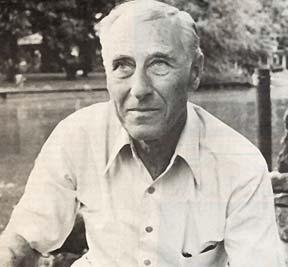 Robert Clayton Spiess
Robert Clayton Spiess(16 October 1921 – 13 March 2002)
“A true haiku is an experience experiencing itself.”
(Speculations by Robert Spiess)
Robert Spiess, editor of American Haiku and Modern Haiku was born on 16 October 1921 in Milwaukee, Wisconsin. After graduation from high school, he enrolled at the University of Wisconsin, in Milwaukee, in 1939 but his plans were interrupted by World War II. He was drafted into the Army Air Force and trained as a cryptographer. Perhaps it was his war experience that helped determine the peaceful path he would follow thereafter. He earned his B.S. degree from the University of Wisconsin, majoring in Botany and English, and then received an M.S., with a major in Vocational Guidance.
Robert became interested in haiku in the late 1930s, through early translations of Japanese haiku.
In the late ’40s and early ’50s he acquired R.H. Blyth’s four volumes of Haiku, and from then on he became hooked on this poetic genre. Robert Spiess published his first haiku in 1949 in American Poetry Magazine, and he became a participating writer. In 1963, he purchased the premiere issue of American Haiku and two of his poems were published in the second issue. A few years later, he accepted the position of poetry editor for that journal.
Robert Spiess’ first collection of haiku, The Heron's Legs, was published in 1966 by American Haiku in Platteville, Wisconsin and over the years he published ten more books. He was also the author of several articles and essays on haiku and his poems have been featured in numerous publications and anthologies. The premier issue of Modern Haiku was published in 1969, and ten of Robert's haiku appeared in the second issue. Within a few years, he was appointed associate editor of that journal. In 1977, he published the first of his "Speculations on Haiku" in Modern Haiku, and in 1978, he became that journal's editor and publisher until his death in 2002.
Robert's countless contributions were integral to the evolution and success of English-language haiku and he was an instrumental mentor in the haiku careers of many contemporary haiku poets.
Books Published:
- The Heron’s Legs (American Haiku, Platteville, Wisconsin, 1966);
- The Turtle’s Ears (Wells Printing Co., Madison, Wisconsin, 1971);
- Five Caribbean Haibun (Wells Printing Co., Madison, Wisconsin, 1972);
- The Shape of Water (Modern Haiku Press, Madison, Wisconsin, 1982);
- The Bold Silverfish and Tall River Junction (Modern Haiku Press, Madison, Wisconsin, 1986);
- New and Selected Speculations on Haiku (Modern Haiku Press, Madison, Wisconsin, 1988);
- The Cottage of Wild Plum (Modern Haiku Press, Madison, Wisconsin, 1991);
- A Year’s Speculation on Haiku (Modern Haiku Press, Madison, Wisconsin, 1995);
- noddy (Modern Haiku Press, Madison, Wisconsin, 1997);
- noddy & the halfwit [with Lee Gurga] (Modern Haiku Press, Madison, Wisconsin, 1999);
- some sticks and pebbles (Modern Haiku Press, Madison, Wisconsin, 2001).
Some awards and other honours:
- In 1988, Robert Spiess was awarded the Haiku Society of America's Special Recognition Award "for a profound, insightful book about haiku".
- In 2000, in Matsuyama, Japan, Robert was presented with the first Shiki International Haiku Award for his achievement in disseminating and deepening the understanding of haiku in English-speaking countries.
- From 2000-2001, Robert was Honorary Curator of the American Haiku Archives.
Selected work:
among these willows:
and breathing the light that falls
from leaf to green leaf(The Heron's Legs, American Haiku, Platteville, Wisconsin, 1966)
*
A drive out of town —
and best of all the billboard
that a wind blew down(Modern Haiku Vol.5:1, 13, 1974)
*
Evening in the park
— and the snow lodging also
in the statue’s eyes(Modern Haiku Vol.6:1, 11, 1975)
*
A couch à la Freud, —
curing souls of sex and things
by which they’re annoyed(Modern Haiku Vol. 6:3, 21, 1975)
*
“Canoeing the Bend” [sequence]
(Modern Haiku Vol.8:3, 12, 1977):canoeing the bend —
a fox in the evening dusk
mouses in a field
canoeing the bend —
a man throwing stones at coots
turns away
canoeing the bend —
motionless, a short-eared owl
watches from an oak
canoeing the bend —
on a sunny ledge of rock
a rattler stirs
canoeing the bend
another bend ahead
thank you
canoeing the bend
in a spit of April snow —
warblers flying by*
a square
of water
re f l e c t s
the moon(The Shape of Water, Modern Haiku Press, Madison, Wisconsin, 1982)
*
ice cubes
aging
in each one's glass(The Bold Silverfish and Tall River Junction, Modern Haiku Press, Madison, Wisconsin, 1986)
*
the field's evening fog—
quietly the hound comes
to fetch me home(The Cottage of Wild Plum, Modern Haiku Press, Madison, 1991); Frogpond 14:4 (1991)
*
wild roses . . .
tarrying beside one
touched by time(From a Kind Neighbor, Haiku Society of America Members’ Anthology 1997)
*
walking for my heart...
so many little karmas
beneath a step(some sticks and pebbles, Modern Haiku Press, Madison, Wisconsin, 2001)
Some essays:
- “Multiple-sense Imagery in Haiku”, Modern Haiku Vol.2:1, 15–16, 1970
- “Notes on Writing Haibun”, Modern Haiku Vol.3:1, 11, 1972
- “The Problem of Originality in Haiku”, Modern Haiku Vol.4:2, 30–34, 1973
- “The Problem of Beauty in Haiku”, Modern Haiku Vol.6:3, 30–32, 1975
- “The Problem of the Ordinary in Haiku”, Modern Haiku Vol.7:2, 16–17, 1976
“A Comparison of Characteristics of English Language Haiku and Senryu”, Modern Haiku Vol.7:3, 30–31, 1976 - “The Problem of Explanation and Interpretation in American Haiku”, Modern Haiku Vol.7:3, 15–17, 1976
- “A Few Notes on the Now-Moment”, Modern Haiku Vol.8:2, 38, 1977
- “The Problem of Reading Haiku”, Modern Haiku Vol.8:1, 30–34, 1977
“Toward a Theory of Fundamental Balance in Haiku”, Modern Haiku Vol.8:1, 39–40, 1977
Sources:
http://www.modernhaiku.org/issue33-3/spiessautobiography.html
http://www.thehaikufoundation.org/poet-details/?IDclient=114
http://www.haikupoet.com/definitions/speculations.html
http://www.modernhaiku.org/MH-Archive/authorsO-S.html#s
http://www.modernhaiku.org/essays/BrooksSpiessHaiku.html
Wikipedia (Russian)
An Interview with Robert Spiess by Michael Dylan Welch at (Modern Haiku Vol.33:3, Autumn 2002) -
Stamenković, Mile
Mile Stamenković
(1952-2000)
Mile Stamenković was born in 1952 in Ogulin, Croatia. He was a medical doctor, gynaecologist and had a Master’s Degree in Medical Sciences. He died in Rijeka in 2000. Mile was also a prominent writer and haiku poet and his poems and haiku have been published in magazines and anthologies in Croatia and abroad. He was a member of The Croatian Haiku Association and The Haiku Society of America.
Mile Stamenković started writing poetry more intensely from 1974 onward and won his first prize in 1977 in the ‘Goranovo proljeće 77’ poetry competition. From then on his poems appeared in many national and international magazines. His haiku were featured in some of the most prestigious haiku journals, anthologies and haiku-calendars (Blithe Spirit, Azami, Woodpecker, Modern Haiku, Haiku Headlines, Hobo, Paper Wasp, The Daily Yomiuri, KŌ, Frogpond, Timepieces). His haiku was also included in Haiku World, an International Poetry Almanac by W. J. Higginson, 1996.
Mile published and illustrated two books of poetry in 1976 and 1993, and a collection of haiku, Breaths of July's Linden Forests, waka and renga in 1995. In 1998 he co-edited with Jadran Zalokar a trilingual anthology of haiku poetry (in Croatian, Italian and English) - Hvatanje sjenke vjetra/ Catturare l'ombra del vento/ Grassping the Shadow of the Wind. In the same year in Rijeka, Mile Stamenković hosted the first meeting of haiku poets from that region.
Books published:
- Poezija i ilustracije, (Poetry and illustrations), 1976;
- Poezija i ilustracije, (Poetry and illustrations), 1993;
- Dahovi srpanjskih lipika / Breaths of July's Linden Forests, waka and renga, 1995;
- Hvatanje sjenke vjetra / Catturare l’ombra del vento / Grasping the Shadow of the Wind, regionalna antologija haikua / Regional Haiku Collection, Rijeka 1999.
Selected haiku:
Uništen prostor - Destroyed area -
vjetar se zaustavio the wind has stopped
pod divljim kestenom. under the horse-chestnut.(An Award, 33rd A-Bomb Memorial Day Haiku Meeting Competition, Kyoto, 1999)
*
Vjetar u šašu. Wind in the reed.
Divlje guske gledaju The wild geese look
u vodu... into the water...(Vrabac/Sparrow No. 7-10, 1994-1995)
*
Next to the flutter
of the wings, the buildings
had flown through.(In the Prime Selection for the best Croatian haiku of the year - Second Annual Haiku Competition 1994 of the Croatian Haiku Association)
*
to be waist deep
in water: neither man
nor – fish.(Haiku World, An International Poetry Almanac William J. Higginson; Kodansha International Tokyo-New York-London, 1996, p. 125)
*
A demolished town.
The wind howls not knowing
where it would go.(Calendar-book the Timepieces: Haiku Week-At-A-Glance 1997)
*
an owl hooting…
the moon slowly siling
down the windy night(Hvatanje sjenke vjetra/Catturare l'ombra del vento/Grasping the Shadow of the Wind, Regional Haiku Anthology. StaM, Rijeka 1999)
*
In the deserted town
hungry war victims
feed the pigeons.(Knots: The Anthology of Southeastern Europe Haiku Poetry.ed. by Dimitar Anakiev, Jim Kacian, Tolmin, Slovenia: Prijatelj Haiku Press, 1999)
*
A distant offing.
Shimmering under the Sun
some fish and shells.Daleka pučina.
Na suncu se ljeskaju
ribe i školjke.(Karolina Riječka 2004 - 2005)
*
The morning guest
shaking down the snow
of his worn out coat.Jutarnji gost
otresa snijeg sa svog
istrošenog kaputa.(Nepokošeno nebo/An Unmown Sky (Antologija hrvatskoga haiku-pjesništva 1996-2007/Anthology of Croatian Haiku Poetry 1996-2007), ed. by Đurđa Vukelić-Rožić, Ivanić Grad, 2011)
Sources:- http://www.thehaikufoundation.org/omeka/files/original/8ee21d6108c6ac9016504459540b570f.pdf
- http://www.worldhaiku.net/poetry/si/m.stamenkovic/stamenkovic.htm
- http://library.foi.hr/M3/kautor.asp?B=1&css=&dlib=1&O=1&A=0000013658&Upit=STAMENKOVI%C6,%20Mile
- http://www.gendaihaiku.com/kacian/beyondkigo.html
- http://www.karolina-rijecka.com/haiku.html
- http://www.magicus.info/hr/magicus/tekst.php?id=72391
- http://simplyhaikujournal.com/past-issues/simply-haiku-2011/autumnwinter-2011/reviews/an-unmown-sky.html
- http://www.tempslibres.org/aozora/en/memo/memo05.html
This profile was created in collaboration with the Croatian poet and editor Đurđa Vukelić-Rožić. We are very grateful for her support and dedication!
-
Stefanov, Dimitar
Dimitar Stefanov
(20 March 1932 – 19 October 2018)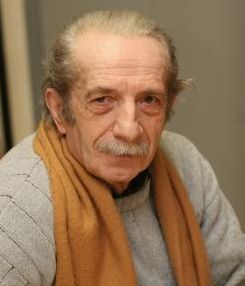 Dimitar Stefanov, a Bulgarian poet, writer, editor and translator, also known as ‘the doyen of Bulgarian haiku’, was born on 20 March 1932 in a small village near Dryanovo, Bulgaria. In 1950 he graduated High School in Dryanovo and then studied Czech and Bulgarian philology at the Charles University in Prague. After graduation he was editor and editor-in-chief of the literary section at Radio Sofia (1955-1969). In the following years he was editor to various newspapers and journals, among them the popular Plamak magazine and the Literary Front newspaper.
Dimitar Stefanov, a Bulgarian poet, writer, editor and translator, also known as ‘the doyen of Bulgarian haiku’, was born on 20 March 1932 in a small village near Dryanovo, Bulgaria. In 1950 he graduated High School in Dryanovo and then studied Czech and Bulgarian philology at the Charles University in Prague. After graduation he was editor and editor-in-chief of the literary section at Radio Sofia (1955-1969). In the following years he was editor to various newspapers and journals, among them the popular Plamak magazine and the Literary Front newspaper.Dimitar’s first collection of poems was published in 1957. He was the author of more than twenty books of poems, sonnets, essays; more than ten books for children. He translated mainly from Czech and Slovak languages. He was the first Bulgarian poet to publish his own book of haiku The Forest of Dandelion (Гората на глухарчето) in 1988. Dimitar also edited the first Bulgarian haiku anthology Rain Seeds (Дъждовни семена) in 2001 which included poems by ninety authors. This book played a great role in the popularizing of the haiku genre in Bulgaria.
Dimitar Stefanov was founding member and chairman of the first organization of haiku poets in the country - the Bulgarian Haiku Club. It was founded in 2000, when Jim Kacian and Dimitar Anakiev visited Bulgaria to organize the Haiku Movement in the Balkans. Later this organization was renamed to the Bulgarian Haiku Union (BHU). Dimitar Stefanov died on 19 October 2018 at the age of 86. He left a rich legacy as a poet, essayist and translator. He has translated over 50 books of poetry and prose from Czech, Old Czech, Russina, and Serbian, and with verbatim text - from Old French, Hindi and Japanese. Some of his books have been translated in Slovakia, the Czech Republic, Serbia, England, and Slovenia. He was also presented in haiku anthologies, almanacs and magazines in many European countries, in Argentina, India, the United States and Japan, in more than twenty languages.
Awards and honours:
- the Czechoslovakian Peter Bezruc Award in the late 1960s;
- awarded the National Prize for Literature "Racho Stoyanov" in 1989;
- Hviezdoslav Prize for Translation of Slovak literature in 1998;
- an honorary diploma of the Ministry of Culture for his contribution to the development and promotion of Bulgarian culture in 2005;
- a Golden medal of the Slovak Foreign Ministry;
- award from the Bulgarian Union of Translators for his translation of Old Czech Satires from the 14th century;
- Honorary member of the Independent Writers' Club – Bratislava;
- the Doctor honoris causa of the World Academy of Arts and Culture (WAAC );
- In 2012 he was appointed an honorary citizen of the town of Dryanovo.
Haiku books and anthologies:
- The Forest of the Dandelion (Гората на глухарчето). Opiti za haiku, Sofia, “Bulgarski pisatel”, 1988; reprinted in 1994;
- Innocent essences (Невинни същности), haiku, 1996;
- Autumn Thrills(Есенни тръпки), Matsuo Basho Library, Serbia, 1996, tr. by Dimitar Anakiev;
- Non-flickering Blue. 303 haiku (НеприМИГващо синьо. 303 хайку), Hristo Botev, Sofia 1999;
- Rain Seeds (Дъждовни семена),
- Both of us. Haiku in Bulgarian, English and Russian (Двамата с тебе. Хайку на български, английски и руски ), 2003;
- Ptitsata(Птицата),
- Invisibilities (Невидимости), haibun , Sofia, 2005;
- All that. 40 poems and 40 haiku (Всичко онова. 40 стихотворения и 40 хайку), Sofia, 2012.
Selected haiku:
Bees searching through
yellow dandelions.
Spring is here.
In the full bucket
trembling
full moon(The Forest of the Dandelion (Гората на глухарчето), Bulgarski pisatel, Sofia, 1988)
*
Cold moon –
shadows within shadows
along the snowy road.(Knots, The anthology of Southeastern European haiku Poetry, edited by Dimitar Anakiev & Jim Kacian, Tolmin, 1999)
*
A seahorse!
A seahorse! My kingdom
for a seahorse!
You and I
were kids
last millennium
The moon is drawing
silky rustle
from the mulberry tree.(Non-flickering Blue (Непремигващо синьо). 303 haiku, Hristo Botev, Sofia 1999)
*
cold moon –
shadows within shadows
along the snowy road(Shamrock, issue 1, 2007 - transl. by the author)
village
bit by a blizzard
then bandaged up by it(Shamrock, issue 1, 2007 - transl. by Ludmila Kolechkova and Anatoly Kudryavitsky)
*
coming from fog
the bird flies through fog
fading into fog(Innocent Entities (Невинни същности), Sofia, 1996; Haiku: The Gentle Art of Disappearing by Gabriel Rosenstock, Cambridge Scholars Publishing, 2009)
*
Лятната луна
– но защо и животът? –
в последна четвърт.
The summer moon
- But why is life as well? –
in its last quarter.(Haiku Svyat (Хайку свят) #1, 2013)
*
Пеперуда,
прикована с карфица –
нова Голгота.
A butterfly
fixed with a pin –
new Golgotha.(The Leaves Are back on the Tree, International anthology, Athens, 2002, ed. Zoe Savina; Beyond Words/Отвъд думите, bilingual haiku anthology, Farrago, Sofia 2018)
*
Със жълти човчици
дрянът лови
февруарски снежинки.
With little yellow beaks
the dogwood catches
February snowflakes.(Beyond Words/Отвъд думите, bilingual haiku anthology, Farrago, Sofia 2018)
Sources:
- https://bg.wikipedia.org/wiki/%D0%94%D0%B8%D0%BC%D0%B8%D1%82%D1%8A%D1%80_%D0%A1%D1%82%D0%B5%D1%84%D0%B0%D0%BD%D0%BE%D0%B2_(%D0%BF%D0%B8%D1%81%D0%B0%D1%82%D0%B5%D0%BB)
- https://literaturensviat.com/?p=91773
- http://www.worldhaiku.net/poetry/bul/d.stefanov.htm
- http://www.milanium.sk/vydavatelstvo/autori/dimitar-stefanov
- https://www.thehaikufoundation.org/omeka/files/original/2597b506fe8b26b164c504f7dd19fd09.pdf
- https://www.thehaikufoundation.org/omeka/files/original/67fb69997c62af05be2a7333cdf425db.pdf
- https://liternet.bg/publish13/d_stefanov/index.html
- https://literaturensviat.com/?p=151505
- http://destinationdryanovo.com/dimitar-stefanov-haiku-poeziya-dryanovo/
- http://1997.blog.bg/izkustvo/2017/04/20/prevodyt-e-viarnost-kym-poetikata-na-avtora-razgovor-s-dimit.1523044
- Haiku Svyat/Хайку свят, Bulgarian Haiku Union journal, p.11-15, Sofia, 2013
-
Takajo Mitsuhashi
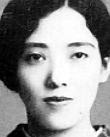 Mitsuhashi Takajo
Mitsuhashi Takajo(24 January 1899 – 7 April 1972)
One of the great Japanese haiku women poets Mitsuhashi Takajo was born on 24 January 1899 near Narita, Chiba. She was a haiku poet of the Shōwa period. She was an admirer and disciple of Akiko Yosano. She got married in 1922 and started writing haiku under the influence of her husband, but then later turned to experimental haiku along with other women poets. By 1936 she became part of a group that founded the short-lived Kon (dark blue) publication and in 1940 had the collection Himawari or Sunflowers published. In 1953 she became involved in Bara (薔薇, dt. "Rose") - a progressive magazine of avant-garde poets who allowed experimental haiku. She has been referred to as a religious ascetic or one who led a life of asceticism and spiritual concentration. She is said to have written works of self-alienation of the vanishing of the empiric Ego in the Void, which according to Kenneth Rexroth “resembles Kierkegaard’s rather than the Buddhist concept.” A statue of her is at Shinshoji Temple. Back in 1964, Blyth, in his History of Haiku, identified her as "the chief woman writer of haiku in Japan."
Her last collection, in 1970, dealt somewhat with death as she had been ill for years.
She is also placed as one of the "4 Ts" of Japanese female haiku poets, the other three being Tatsuko Hoshino, Nakamura Teijo, and Hashimoto Takako.
She died on 7 April 1972.
Haiku collections:
- Himawari (向日葵, dt. "Sunflower") in 1940;
- Uo no hire (Fins of a Fish)
- Hakkotsu (白骨, dt. "The Bleached bones") in 1952;
- Shida-jigoku (歯朶地獄, dt. "The Fern Hell") in 1961;
- Buna (ぶな, dt. "Beech"), 1970.
Selected work:
climb this tree
and you'll be a she-devil
red leaves in the sunset glow
up on a hydro pole
the electrician turns
into a cicada(Far Beyond the Field: Haiku by Japanese Women, by Makoto Ueda, Columbia University Press, 2003, pp.109-110)
*
winds of autumn -
water less transparent
than the fins of a fish(Haiku Mind, Patricia Donegan, Shambhala Publications. 2008, p.195)
*
O bird’s singing!
The dead walk
on the plain of the sea.
The hair ornament of the sun
has sunk
into the legendary sea.(Women Poets of Japan by Ikuko Atsumi; Kenneth Rexroth, New Directions, 1977, p. 80)
*
春水のそこひは見えず櫛沈め 三橋鷹女
shunsui no sokoi wa miezu kushi shizume
not able to see
spring water’s bottom…
I sink my comb(from “Haiku Dai-Saijiki” (“Comprehensive Haiku Saijiki”), Kadokawa Shoten, Tokyo, 2006)
*
口中一顆の雹を啄み火の鳥や
Kōchu ikka no hyō wo tsuibami hi no tori ya
A hailstone held
in its beak,
the firebird soars(From Mitsuhashi Takajo Zenkushū (Collected Haiku of Mitsuhashi Takajo, 1976)
*
老いながら椿となつて踊りけり
oinagara tsubaki to natte odorikeri
as I get older
I will become a camellia
and dance and dance秋の蝶です いつぽんの留針です
aki no choo desu ippon no tomebari desu
I am an autumn butterfly
I am just one pin(Tr. Gabi Greve)
Sources:
- http://wkdhaikutopics.blogspot.co.uk/2007/03/mitsuhashi-takajo.html
- https://en.wikipedia.org/wiki/Mitsuhashi_Takajo
- http://www.hsa-haiku.org/frogpond/2009-issue32-3/essay.html
- http://www.haikuworld.org/books/farbeyond.review.html
- https://translate.google.co.uk/translate?hl=en&sl=de&u=https://de.wikipedia.org/wiki/Mitsuhashi_Takajo&prev=search
- http://omamorifromjapan.blogspot.co.uk/2011/08/terifuri-ningyoo-weather.html
- http://www.japannavigator.com/2011/07/haiku-stones-in-kanto-mitsuhashi-takajo.html
- https://fayaoyagi.wordpress.com/2016/04/14/todays-haiku-april-14-2016/
- http://bungeikan.jp/international/detail/10/
- Mitsuhashi Takako zenshū (Rippū Shobō, 1889), vol. 2, pp. 203-207;
- Hashimoto Takako, Mitsuhashi Takako shū (Asahi Shimbunsha, 1984), pp. 33-336;
- Women Poets of Japan by Ikuko Atsumi; Kenneth Rexroth, New Directions, 1977, p. 80; p.153;
- Haiku Mind, Patricia Donegan, Shambhala Publications, 2008, p.195.
-
Taneda, Santōka (種田 山頭火)
 Taneda Santōka (種田 山頭火)
Taneda Santōka (種田 山頭火)3 December 1882 – 11 October 1940
-
Tate Sayre, Barbara
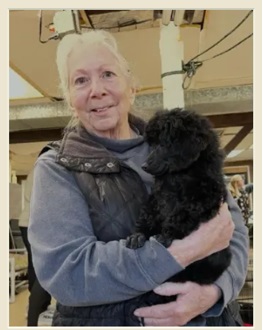 Barbara Tate Sayre
Barbara Tate Sayre(4 February 1944 – 29 July 2024)
Barbara Tate Sayre, born on 4 February 1944, was an American artist and writer whose work achieved distinction in both national and international literary circles. Recognised for her contributions to poetry, incl. the haiku tradition, she was the recipient of several awards, including first place in the Gulf Coast Writers Association Poetry Division. She was also a finalist in the United Poet Laureate International Competition for the Alexander Fui Sak Chang Award in short free verse (Chinese or English), and in the Poetry Society of Tennessee NE Competition, among others.
Her devotion to brevity and precision found its natural home in haiku and related forms. Barbara Tate was an active member of the British Haiku Society, Haiku Society of America, and Haiku Canada, reflecting her deep engagement with the global haiku community. Her poetry and prose appeared in numerous journals, including Akitsu Quarterly, Blithe Spirit, Contemporary Haibun Online, hedgerow, Failed Haiku, Frogpond, Modern Haiku, Presence, Santa Fe Literary Review, Seashores, Storyteller, tinywords and The Heron’s Nest. Within the British Haiku Society, her work was prominently anthologised in volumes such as Wild (2018), Root (2019), Stories Under Every Rock (2020, the 30th anniversary haibun anthology), City (2020, the 30th anniversary haiku anthology), Temple (2021), Water (2022), Change (2023), and the bilingual anthology Shining Wind/Сияен вятър (2024).
Her career as a published writer began in 1968, when her early fiction and poetry first appeared in print. Over subsequent decades, she contributed extensively to a wide range of journals and anthologies, producing work that was consistently noted for its precision, clarity, and evocative brevity. Born in Akron, Ohio, Tate later resided in Winchester, Tennessee. She died on 29 July 2024 following an illness with cancer. Her body of work continues to represent a significant contribution to contemporary haiku and short-form poetry.
Published books:
- Far More Than I Ever Was, by Barbara Tate (Windsor, Conn.: Café Nietzche Press, 2021)
- Darkness in a Noonday Night, by Barbara Tate (Windsor, Conn.: Café Nietzsche Press, 2021)
Selected work:
gold rush
a field of flowers
untamed(BHS Members’ Anthology Wild, 2018)
*
Grand Canyon...
the echoes
of silenceChinese Translation (Traditional):
大峽谷...
寂靜
的迴聲(NeverEnding Story, 4 April 2018)
*
Christmas cantata
the organist pulls out
all the stops(Frogpond, Vol. 42:1, winter 2019)
*
family reunion
creating waves in the
gene pool(BHS Members’ Anthology Root, 2019)
*
park bench
his shadow creeps closer
and grips my hand(City – the 30th anniversary haiku anthology, 2020)
*
Parallel Universe
. . . a microscopic sorcerer chants an incantation and begins lacing and plaiting a silken snare closing the opening in the dreamcatcher, plucking veiled threads and deliberately restraining visions that avoid capture. The master harpist weaves a labyrinth flawlessly and closes the circle seeking to suck reality gone. The nightmare will come.
memories
wrapping myself in a quilt of old age
I believe in pretend(cho 16:3 | Dec. 2020)
*
midnight fog
the lighthouse beacon
a wide arc of warning(BHS Members’ Anthology Temple, 2021)
*
incoming storm
sitting on the sea-wall
me and a cranky sand crab
letting go of memories
one at a timetrail dust
the only thing left
between ussolitude
I lose the chess game
to my alter ego
visiting hours
everyone brings their own
opinion(Darkness in a Noonday Night, 2021)
*
early snow
catching the sky
on my tongueunbalanced
sharing a canoe
with a dragonfly(Far More Than I Ever Was, 2021)
*
first light
fog moves in silencing
a loon’s call(BHS Members’ Anthology Water, 2022)
*
resignation
beginning a journey
to find myself(BHS Members’ Anthology Change, 2023)
*
twilight
a night owl in the shadow
of the moon(BHS bilingual anthology Shining Wind/Сияен вятър, 2024)
Sources:
- https://thehaikufoundation.org/poet-details/?IDclient=2363
- https://charlottedigregorio.wordpress.com/2021/07/23/special-to-the-daily-haiku-july-24-2021-review-of-barbara-tates-latest-collection/
- https://www.thehaikufoundation.org/omeka/items/show/6251
- https://contemporaryhaibunonline.com/cho-16-2/barbara-tate-mending-fences/
- https://drifting-sands-haibun.org/2023/10/09/barbara-tate/
- https://modernhaiku.org/issue53-1/MH53-1-briefly-reviewed.pdf
- https://www.watsonfhtn.com/obituaries/Barbara-Mae-Tate?obId=32569740
- https://neverendingstoryhaikutanka.blogspot.com/2018/04/butterfly-dream-grand-canyon-haiku-by.html
-
Tico, Tom
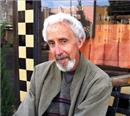 Tom Tico
Tom TicoMay 15, 1942 - February 4, 2016
Tom Tico's Legacy Biography -
Tomić, Luka
LUKA TOMIĆ (1933 ̶ 2022)
 Biography
BiographyLuka Tomić, a writer and politician, lived and worked in Makarska, Croatia. He had a PhD in Economics and was the first president of the Matrix Croatica, Makarska branch. His work was translated into Slovenian, Romanian, Macedonian and English. Professionally, he published about eighty scientific papers in the fields of bookkeeping, organization, work evaluation and planning. During his lifetime he performed various business functions in different companies and was an expert lecturer for future economists. He was the President of the Assembly of the Split-Dalmatia County. He was awarded the Order of Ante Starčević by Croatia’s first president Franjo Tuđman in 1997. Luka Tomić published 15 collections of aphorisms and epigrams, and a collection of poetry.
Books published – Japanese short poems:
- Smokvin list (A Fig’s Leaf), Makarska, Croatia, 2014;
- Iskroskok / Sparkling of the Sparks, Makarska, Croatia, 2018.
Selected haiku and senryu:
even a kerosene lamp
may diminish the light
of the skyi petrolejka
može smanjiti svjetlost
nebeskog svoda(Smokvin list, 2014)
*
spring mist
the sailboat masts
hung in the airproljetna izmaglica
jarboli jedrenjaka
vise u zraku(The 9th Yamadera Basho Memorial Museum, Japan, 2017)
*
a house dog knows
he is allowed to bark
only within himselfkućni pas već zna
da jedino u sebi
smije lajati(First Prize, The Ivanić-Grad Senryu Contest, Croatia, 2017)
*
the seagulls call
from invisible heights
louder than the stormzov galeba
iz nevidljivih visina
glasniji od nevere(EarthRise Rolling Haiku Collaboration, THF, USA, 2017)
*
the Bora of Primorje*
gust after gust
in y rhythm without rhythmprimorska bura
raful za refulom
u ritmu bez ritma(IRIS No. 11, Croatia, 2017)
*Primorje – the Croatia Littoral
-
Verhart, Max
Max Verhart
(14 January 1944 – 17 April 2018)
Max Verhart was born on 14 January 1944 in Heerlen, Netherlands and resided in ’s-Hertogenbosch, Southern Netherlands. His has been interested in haiku since 1980. He wrote haiku both in Dutch and English and has published haiku and linked poetry since 1995 in various journals, anthologies and internet sites like Woodpecker, Lynx, Frogpond, Modern Haiku, Ginyu, The Art of Haiku 2000, etc. He has also published essays on haiku in the journals Vuursteen and Kortheidshalve since 1996. His work has been translated in Bulgaria, Croatia, Germany, Greece, France, Hungary, Japan, Netherlands, Poland, Russia, Serbia, and USA.
Max attended a number of international haiku meetings: in Great Britain (1999), Slovenia (1999), the Netherlands (2003), Germany (2005, 2013), Sweden (2007), Belgium (2010, 2014, 2015), and Poland (2015). He served as the President of the Haiku Circle Netherlands (Haiku Kring Nederland) (1999 - 2003); European director of the World Haiku Association (2001 - 2002); Member of the editorial staff of The Red Moon Anthology (Red Moon Press, USA) since 2002; Editor of the Dutch/Flemish quarterly Vuursteen (Flint) (2003 - 2009) - the oldest still existing haiku journal in Europe which had been founded in 1981 together with the Haiku Centre of Flanders HCV (Haiku-centrum Vlaanderen); Foreign Correspondent Co-editor of Modern Haiku (2007-2-13); Owner of 't schrijverke(whirligig), a Dutch publishing house since 2005. From 2010 to 2015 Max edited, in cooperation with Marlène Buitelaar, Norman Darlington (Ireland) and Klaus-Dieter Wirth (Germany) the bilingual (Dutch and English) haiku journal Whirligig.
It is probably no coincidence that after a serious illness Max left this world on 17 April 2018 – the International Haiku Day. And although he will be missed by all of us in the various haiku communities around the world, his legacy will live on. As his friend and fellow haiku poet Klaus-Dieter Wirth wrote in Max Verhart’s obituary for Frogpond 41.2, one of Max’ greatest “concern was to collect everything published documenting Dutch haiku poetry to preserve it for posterity. And, to his great joy, he finally, in 2016, succeeded in finding a worthy home for his archive material: the Flemish Poetry Centre (Poëziecentrum Vlaanderen) in Het Toreken (Little Tower), a medieval guildhall in the central marketplace, Vrijdagmarkt (Friday market), in Ghent.”
Books Published:
- Zijn met wat is [to be with what is; haiku in Dutch] (Sintjoris, Sint-Denijs-Westrem: Belgium, 1993);
- een beetje adem; [haiku in Dutch] ('t Hoge Woord, Bakhuizen: Netherlands, 1998);
- some breath [haiku in English] ('t Hoge Woord, Bakhuizen: Netherlands, 1999);
- geen woord teveel / not a word too much [haiku, bilingual] ('t Hoge Woord, Bakhuizen: Netherlands, 2000);
- smoke signals [nine rengay with Betty Kaplan] ('t Hoge Woord, Bakhuizen: Netherlands, 2003);
- [to be short; in Dutch] ('t schrijverke, 's-Hertogenbosch: Netherlands, 2005);
- Zwölf Monde / Twaalf manen / twelve moons [rengay With Horst Ludwig, trilingual] ('t schrijverke, 's-Hertogenbosch: Netherlands, 2005);
- [haiku & haiga in English] ('t schrijverke, 's-Hertogenbosch: Netherlands, 2008);
- Bleek bosvogeltje [white helleborine; a novel in Dutch] ('t schrijverke, ’s-Hertogenbosch, 2009).
Selected haiku:
bare trees
no other sound but
falling snow(geen woord teveel / not a word too much; 't Hoge Woord, Bakhuizen: Netherlands, 2000)
*op het stille plein
beweegt alleen de schaduw
van het ruiterbeeldsilent square
nothing moves
but the statue's shade(Modern Haiku XXXII:2 (2001)
*
spring rain
the horse’s back
darkens(Ehime: One hundred Haiku. Ehime Culture Foundation; Matsuyama, 2002)
*
burning holes
in a bamboo cane –
the scent of music(Frogpond XXVI/3 (2003)
*
yellow letters –
love kept together
by a string(shiki free format Kukai 2nd (Nov 2005); Jointure 84 (2006)
*
out of the haze
the dog brings back
the wrong stick(shiki kigo Kukai 1st ( March 2006); Letni Časi #30-31 (2006)
*
red clouds
losing their colour –
a crow’s screechmorning haze
time too is only
a silhouettedeep winter
even that single star might be
a milky waycrematorium –
the lobby smelling
of humid coats(only the white; 't schrijverke, 's-Hertogenbosch: Netherlands, 2008)
*
trouwfoto
mijn toekomstige ouders
nog gelukkig
zdjęcie ślubne
moi przyszli rodzice
ciągle szczęśliwiwedding picture
my future parents
still happy(Haiku Anthology - Second International Haiku Conference, Kraków - May, 2015)
Some essays:
- THE ESSENCE OF HAIKU AS PERCEIVED BY WESTERN HAIJIN - Essay by Max Verhart (Modern Haiku, Volume 38.2 - Summer 2007)
- HAIKU ABOUT ALMOST NOTHING by Max Verhart – The Haiku Foundation
- Haiku in the Netherlands and Flanders – by Max Verhart
Sources:
- https://www.thehaikufoundation.org/poet-details/?IDclient=102
- https://www.cyberwit.net/authors/max-verhart
- http://www.worldhaiku.net/poetry/nl/m.verhart.htm
- https://www.poeziecentrum.be/bericht/max-verhart-overleden
- http://haiku.nl/max-verhart-haikus/
- Reddingius, Hans, “A History of Haiku in the Netherlands,” The Haiku Foundation, July 2016
We are very grateful to Klaus-Dieter Wirth who provided some information for this tribute!
-
Vurdelja, Milka
MILKA VURDELJA (1935 ̶ 2022)
 Biography
BiographyMilka Vurdelja (neé Serdar) wrote poetry and she had her haiku, senryu, tanka and haibun published in domestic journals and joint collections. She spent her working years as a teacher of the Croatian language and literature. For over thirty years she was the head of the school’s literary section “Club of the Friends of Books“ for which she organized a number of meetings of the pupils with writers. Milka Vudelja was a member of the Editorial Board of the joint collection Koraci k suncu (Steps towards the Sun), published by the Folk Society of Grammar School “Vlado Knežević“. For her dedicated work and zeal, she was honoured with the Order of Labour with Silver Wreath in 1977.
Selected haiku:
dancing the reel
with Barbie dolls
my granny’s ragdollu kolu barbike
i lutka moje bake
od krpica(Toys, a post-contest anthology, Croatia 2017)
*
my yard
warmed up by the flowering
dandelionsmoje dvorište
toplo od rascvjetalih
maslačaka(Ludbreg haiku miscellany, Croatia, 2018)
*
an outline of a combine
in a cloud of cuttings
and grasshoppersobris kombajna
u oblaku od pljeve
i skakavaca(IRIS No. 12, Croatia, 2018)
Selected tanka:
the morning sun
glistening on the roofs
after drizzle
the scent of wet clothing
fill the classroomjutarnje sunce
blista na krovovima
poslije pljuska
miris mokre odjeće
puni učionicu(IRIS No. 12, Croatia, 2018)
*
Calm evening
a wet smoke twisting
above potato field
the scent of autumn
in my brother’s hairProhladna večer
krumpirištem se vije
ovlaženi dim
miriše jesen u kosi
moga umornog brata(IRIS No. 13, Croatia, 2019)
-
Wills, John
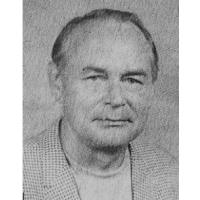 John Wills
John Wills(4 July 1921 – 24 September 1993)
John Howard Wills was born on 4 July 1921 in Los Angeles, California. He received an MA degree from the University of Chicago in 1951, and a PhD from Washington University in St. Louis in 1961. For more than two decades John taught American and English literature at universities in Ohio, Wisconsin, Minnesota, North Dakota, North Carolina, Georgia, and Tennessee and during that time, he published critical essays on T. S. Eliot, Joseph Conrad, and other writers. After the death of his first wife, he married artist and poet Marlene Morelock (now known as Marlene Mountain). They worked together on several haiku projects with him writing the poem and her creating the artwork behind the poem – drawings and photographs.
John’s earliest attempts at writing haiku were made in 1965 after Marlene showed him 'The Way of Zen' by Alan Watts. Actually his earliest haiku writing was influenced by his children's poems. Later in 1968, a colleague gave John and Marlene some back copies of ‘American Haiku’ (which had published its last issue that May). John’s serious interest in haiku began after getting acquainted with the work of Nicholas Virgilio. As he wrote more and more haiku, his skills quickly improved and some early work appeared in 1969 in Haiku West, SCTH, Haiku (Canada), and Haiku Spotlight (Japan). Within that same year, John published his first two books - Weathervanes and Back Country. If one considers the poets publishing in early ‘American haiku’ as the first wave, John was among the second wave of contemporary writers of English-language haiku and some of his earliest work did not follow the traditional rules. He had a very unique style of writing and according to some haiku experts there was a certain iambic meter to his style, almost like a musical flow in his haiku. Encouraged by his wife Marlene Mountain who was one of the first English-language haiku poets to write haiku regularly in a single horizontal line, John wrote some 'one-line' haiku which were later published.
In 1970, John spent the summer studying haiku in Matsuyama, Japan, under a research grant from Georgia Southern College, and in 1971, he moved with his family to Tennessee. They lived on 100 acres in the mountains of Tennessee and named their land "Sweetwater." Much of his best work was written there and he would be called by some the greatest nature poet writing haiku.
By the end of his life, John Wills had published more than 800 haiku and nine books. His haiku were published in journals and anthologies and his work still appears in articles and essays written by a new generation of haiku poets, as well as by his contemporaries who continue to cherish and admire his work. John Wills died on 24 September 1993.
Books Published:- Weathervanes, published by Rhoda de Long Jewell ; (Sangre de Cristo Press, 1969);
- Back Country, photographs by Marlene M. Wills. Partial funding: Georgia Southern College (1969);
- river, drawings by Marlene M. Wills for Georgia Southern College (1970), 2nd ed. Elizabethton, Tenn. (1976);
- The Young Leaves: Haiku of Spring and Summer,drawings by Marlene M. Wills. Statesboro, Ga.: Georgia Southern College (1970);
- Cornstubble: Haiku of Fall and Winter, Photographs by Marlene M. Wills. Statesboro, Ga.: Georgia Southern College (1971);
- 21 haiku greeting cards, haiku by John Wills, drawings/design by Marlene Wills, 1977, self-published, TN;
- Up a Distant Ridge, Manchester, N.H.: First Haiku Press (1980);
- Reed Shadows, Sherbrooke, Que./Windsor, Ont.: Burnt Lake Press/Black Moss Press (1987);
- mountain, S.E. Publishing (1993).
Awards and other Honours:
- Appointed to the first Haiku Society Awards Committee (the Society accepted the committee's recommendations and added awards for Wills' books Back Country and river);
- Served on the first selections panel for Frogpond magazine;
- First Honourable Mention, HSA Merit Book Awards for Reed Shadows;
- John had 21 haiku selected for the 1974 edition of The Haiku Anthology, 36 haiku for the 1986 edition, and 40 for the 1999 edition.
Selected works:
The hills
release the summer clouds
one . . . by one . . . by one(Back Country, Wills J., (1969)
the old field
throbs with insects...
summer moon(Frogpond 8:3 (1985)
autumn wind
the rise and fall
of sparrows(Modern Haiku 18:1 (winter-spring 1987)
the river
leans upon the snag
a moment(Reed Shadows, Wills, J.,Sherbrooke, QC.: Burnt Lake Press, 1987)
dusk from rock to rock a waterthrush
(Up a Distant Ridge (1980); The Haiku Anthology, Van Den Heuvel, Cor, ed. , New York: Norton, 2000, p.301)
in an upstairs room
of the abandoned house
a doll moongazing(The Haiku Anthology, Van Den Heuvel, Cor, ed. , New York: Norton, 2000, p.304)
i catch
the maple leaf then let
it go(from Haiku Mind: 108 Poems to Cultivate Awareness and Open Your Heart by Patricia Donegan, Shambhala Publications Inc, 2008)
More of John’s early haiku at:
http://www.marlenemountain.org/backward/limage/ftm8c_jwillshaiku.html
Some articles, essays and interviews with John Wills:
- Wills, John, "Depth in Haiku," unpublished essay (1974);
- van den Heuvel, Cor, ed., The Haiku Anthology, New York: Anchor Books (1974);
- McClintock, Michael, "A Conversation With John Wills," Modern Haiku 7:2 (1976), 6-8;
- van den Heuvel, Cor, "John Wills and One-Line Haiku - I: A Troutswirl Simplicity", Frogpond 4:4 (1981), 30–33;
- van den Heuvel, Cor, "John Wills and One-Line Haiku – II: One-Liners", Frogpond 5:1 (1982), 38–45;
- van den Heuvel, Cor, "John Wills and One-Line Haiku – III: Three in One or One in Three", Frogpond 5:3 (1982), 38–46 [Correction in Frogpond VI;1 (1983), 45-46;
- St. Jacques, Elizabeth, "The Importance of Rhythm in Haiku," Woodnotes 15 (1992);
- Estevez, Efren, "Images of John Wills," Frogpond XXVII:1 (2004), 55-57;
- Estevez, Efren, "Troutswirl: Art in the Nature Poems of John Wills," The Haiku Society of America Newsletter XXI:4 (2006), 12-13.
Sources:
http://www.marlenemountain.org/mminfo/mi_mmjw_books.html
http://www.thehaikufoundation.org/poet-details/?IDclient=7
http://terebess.hu/english/usa/wills.html
http://performance.millikin.edu/haiku/writerprofiles/RuffnerOnWills.html
https://en.wikipedia.org/wiki/Haiku_in_English
http://www.hsa-haiku.org/frogpond/2010-issue33-2/essay2-miller.html
http://www.modernhaiku.org/essays/RossEssay.htmlThis profile was created in collaboration with John Wills’ wife the poet and artist Marlene Mountain. We appreciate her help in updating the available information on John’s biography and publications!
-
Zivkovic, Verica
Verica Zivkovic
Born 1957
Lived in Starcevo, Serbia
Died December 10, 2014
